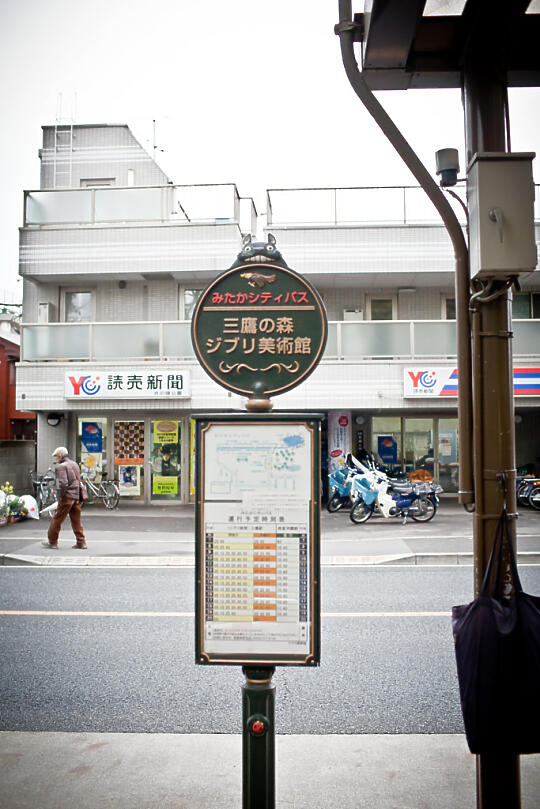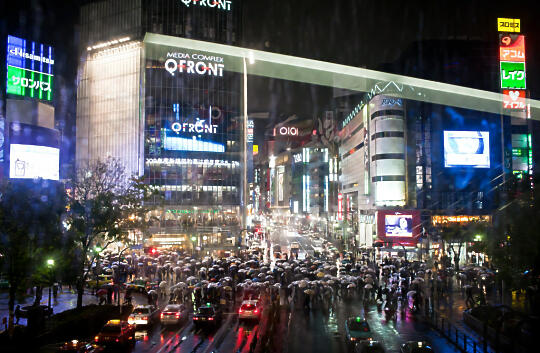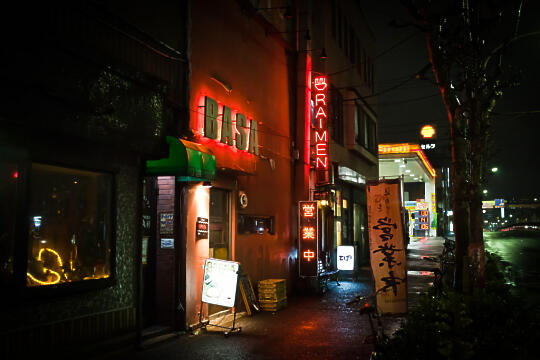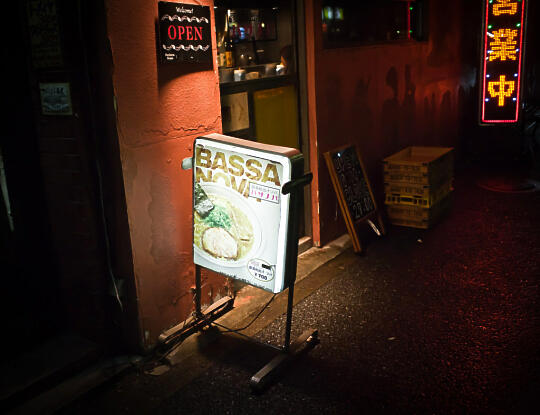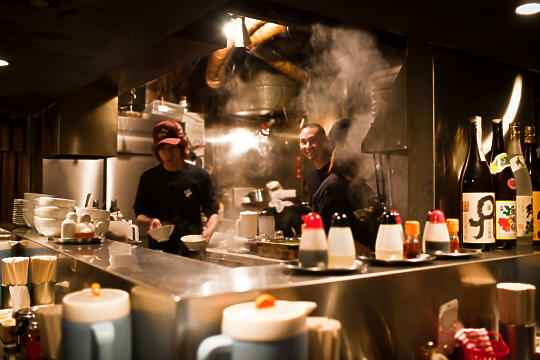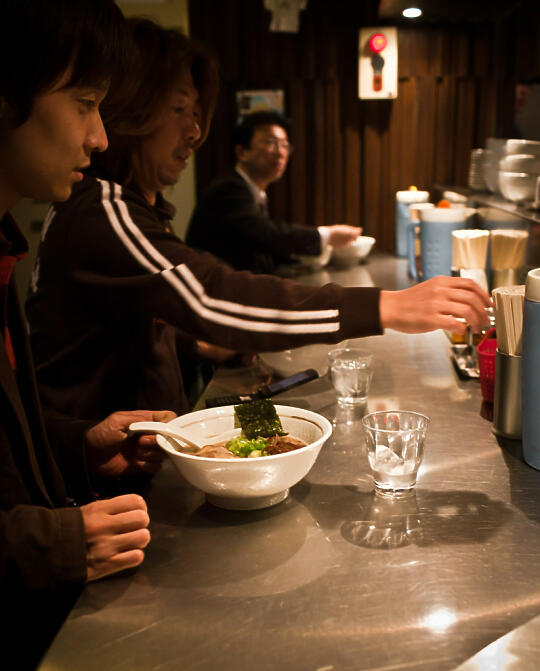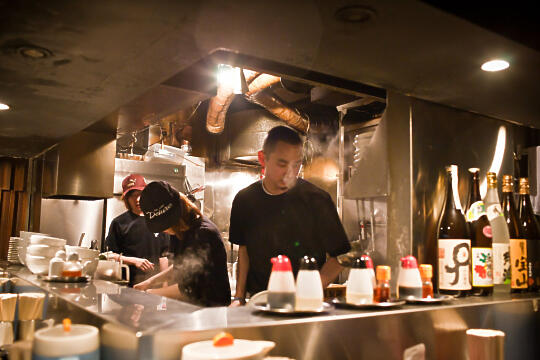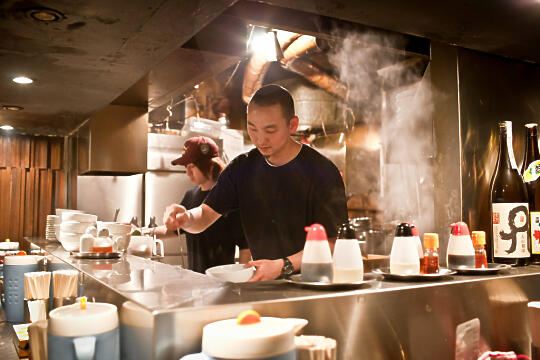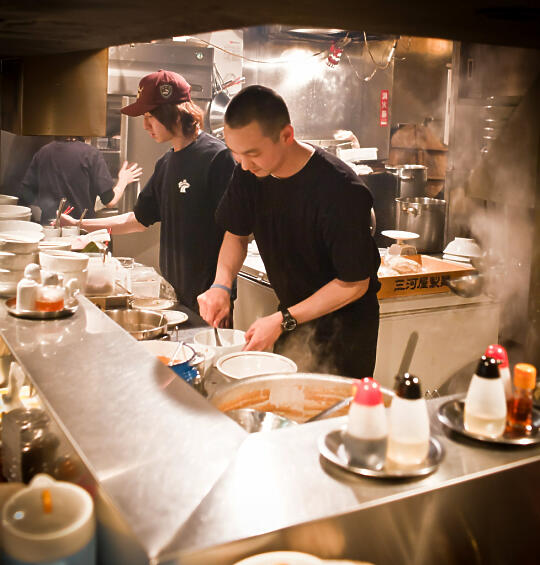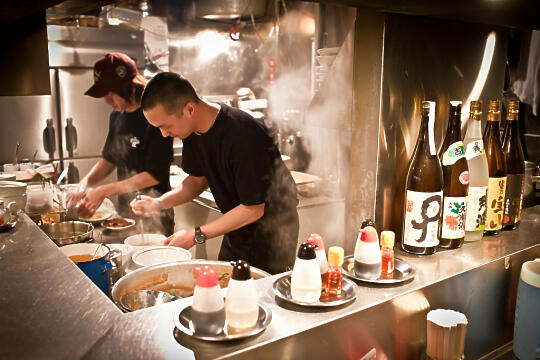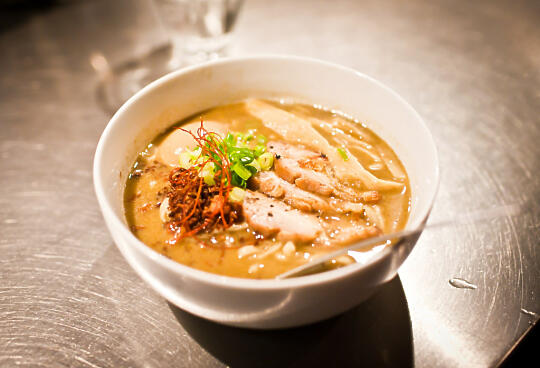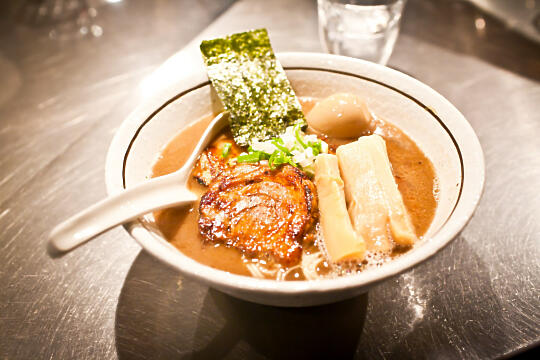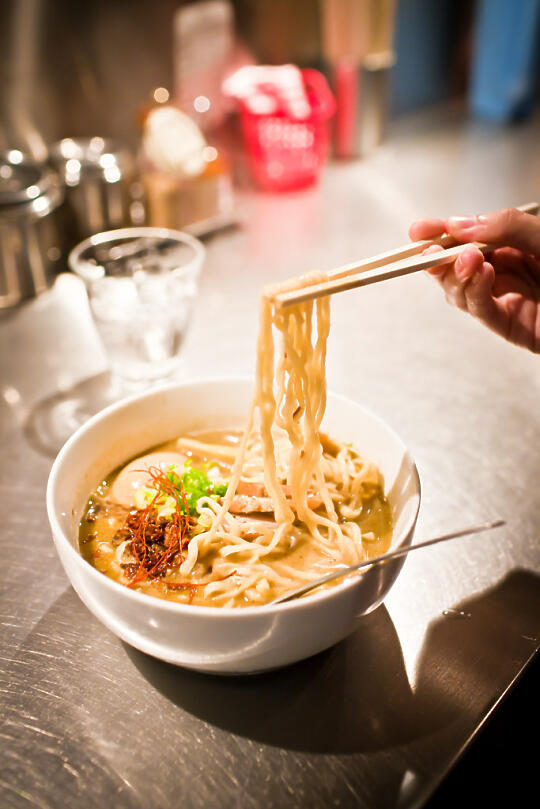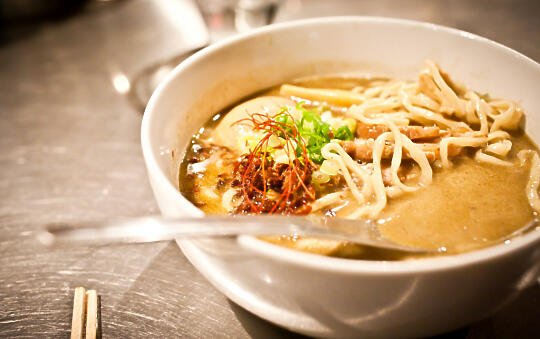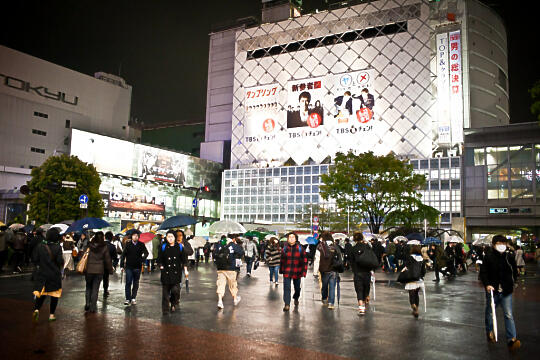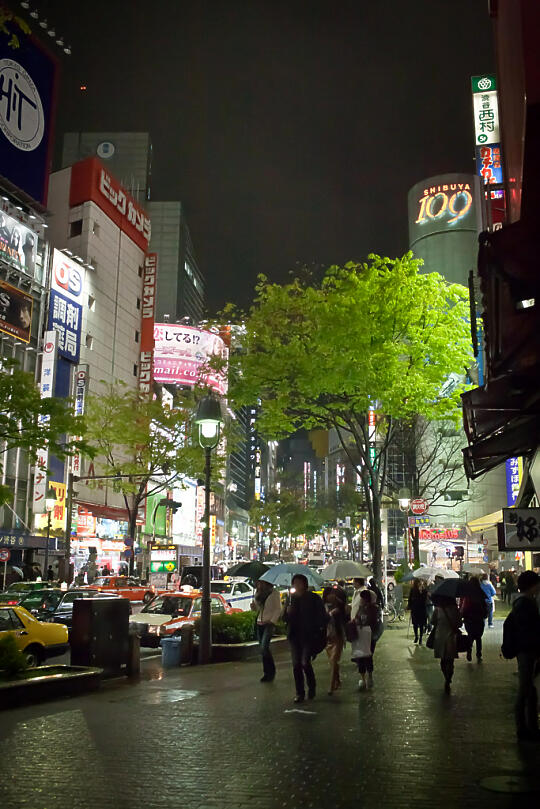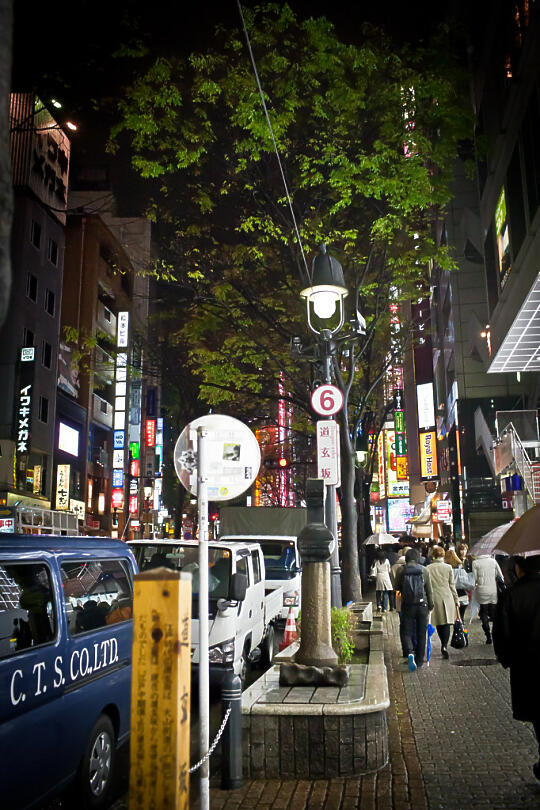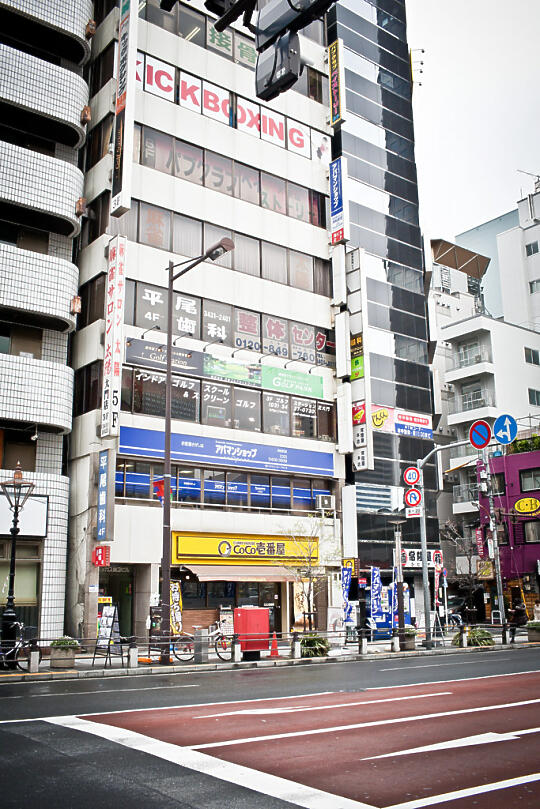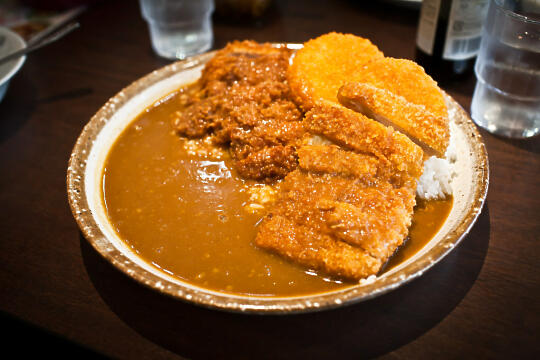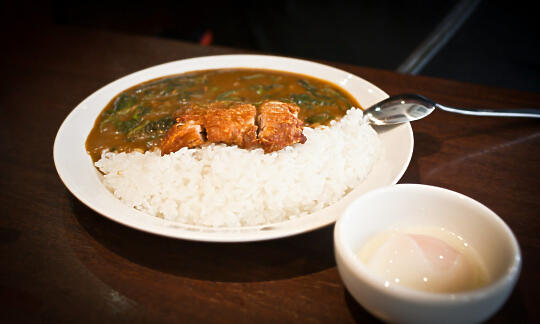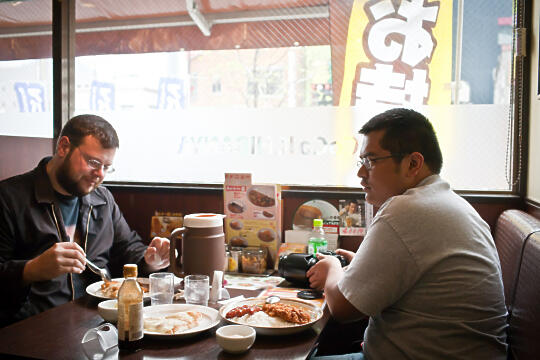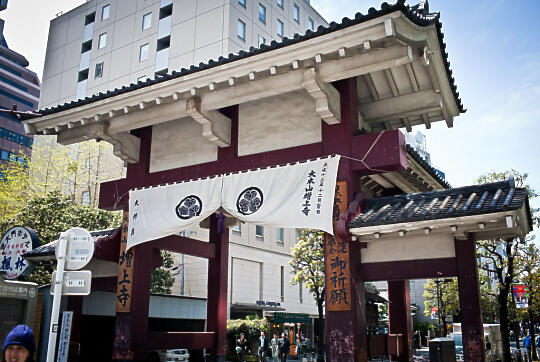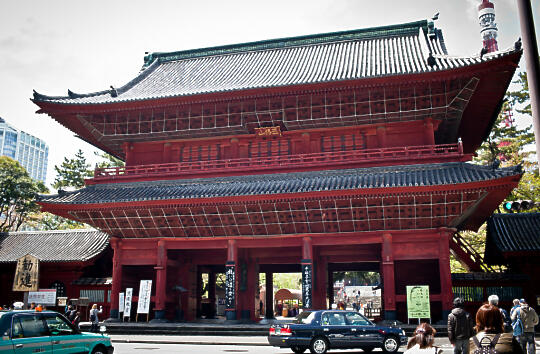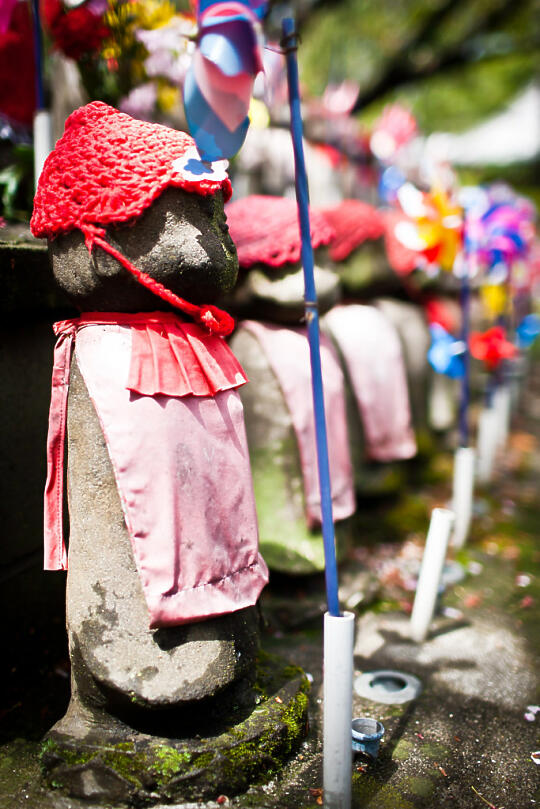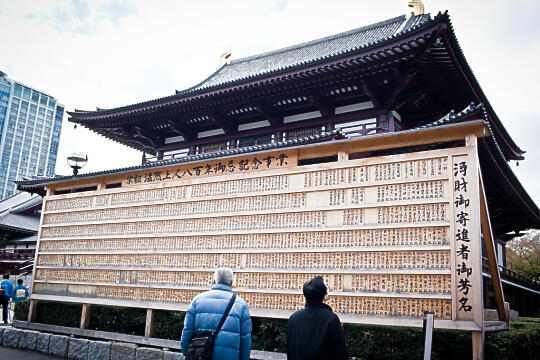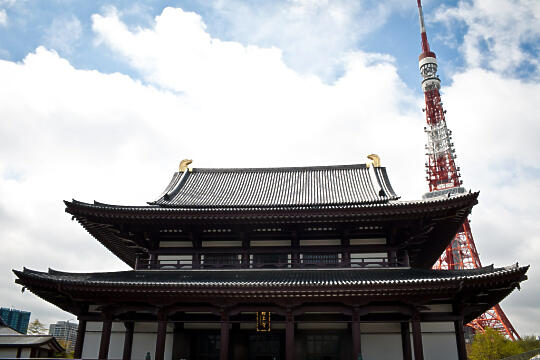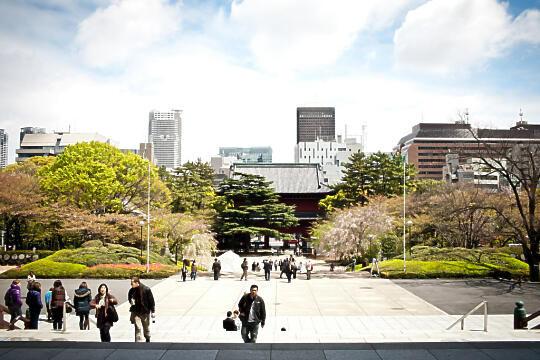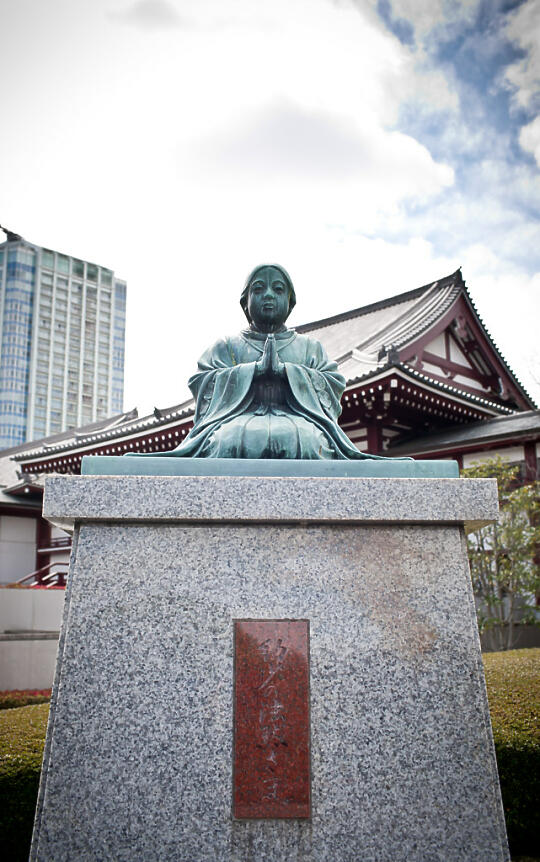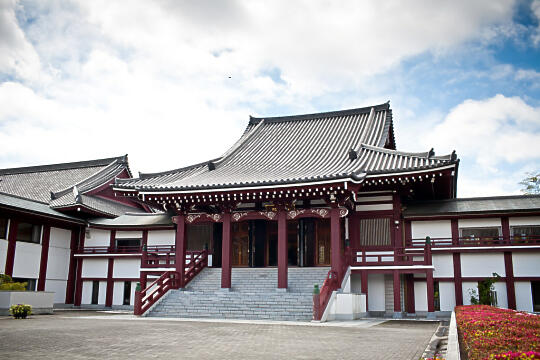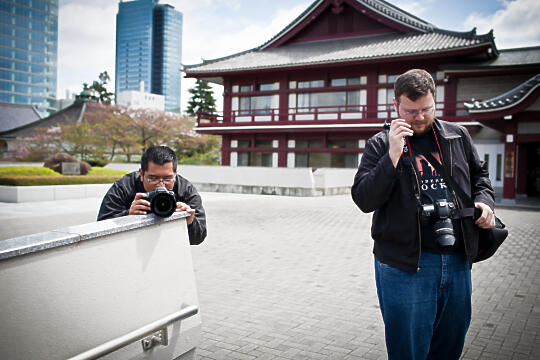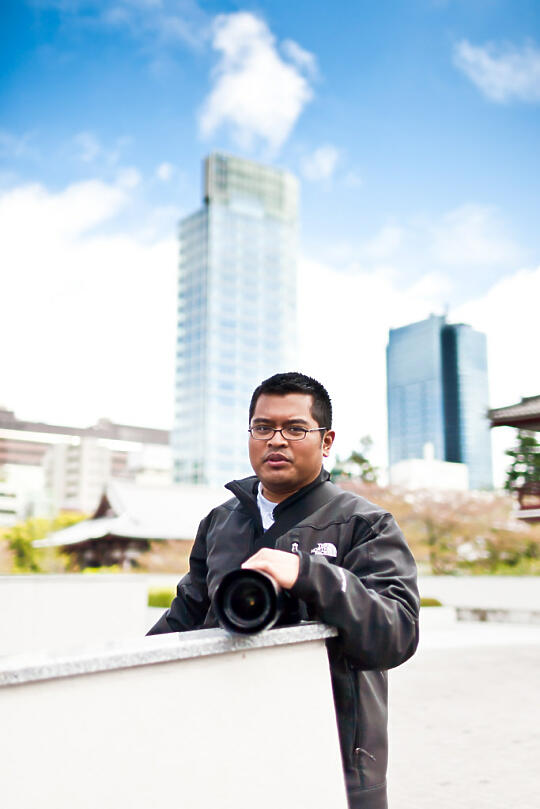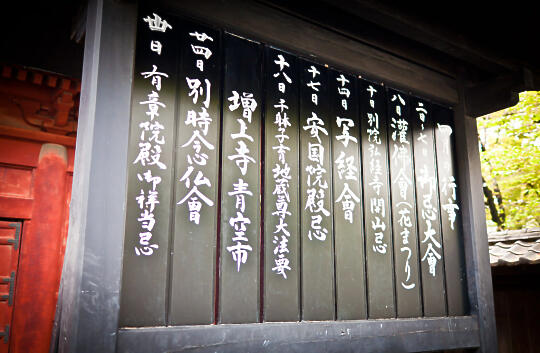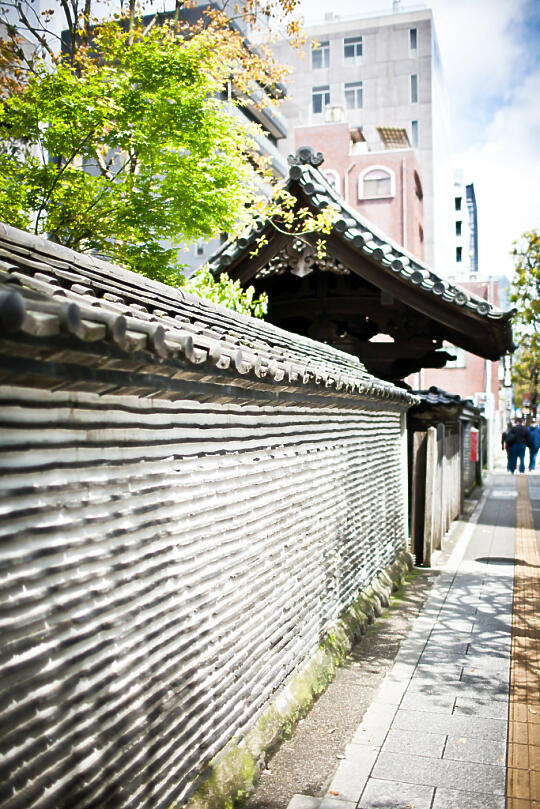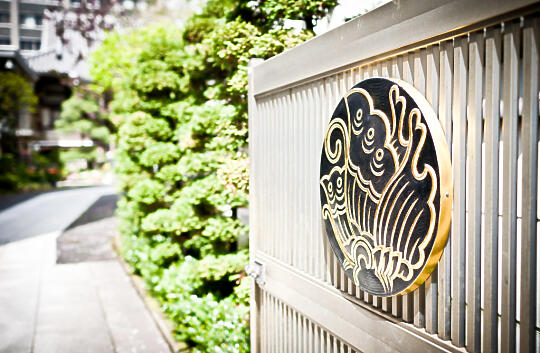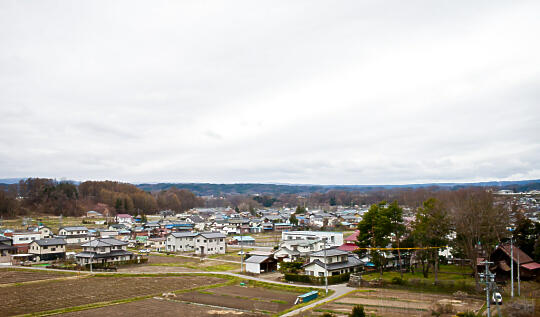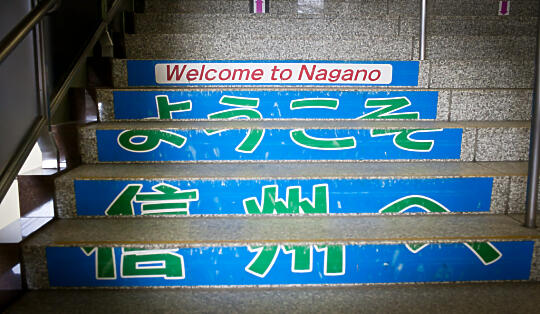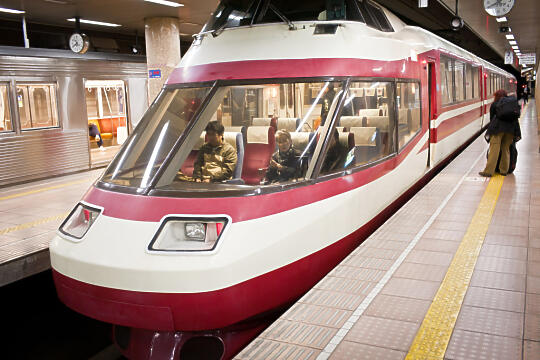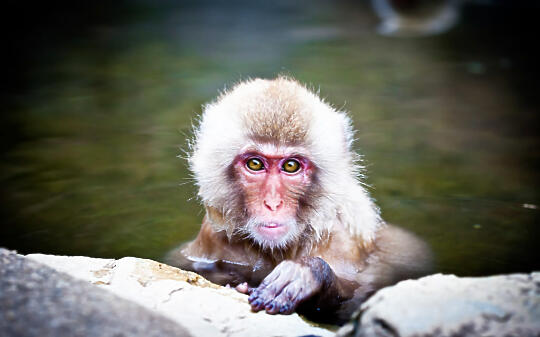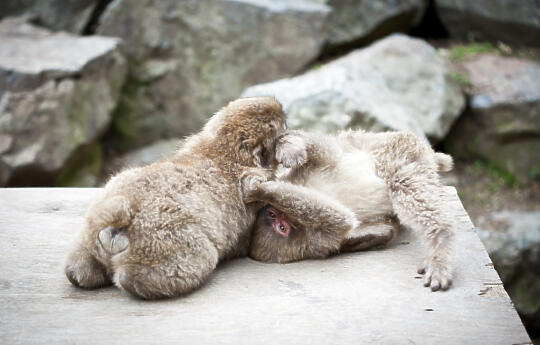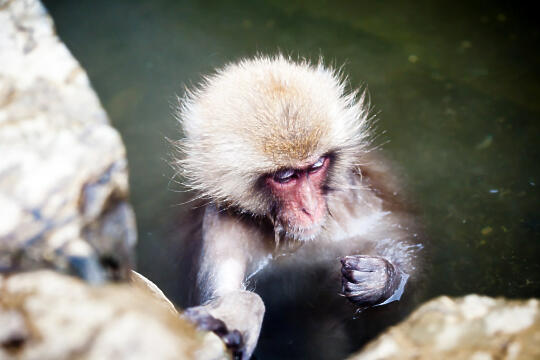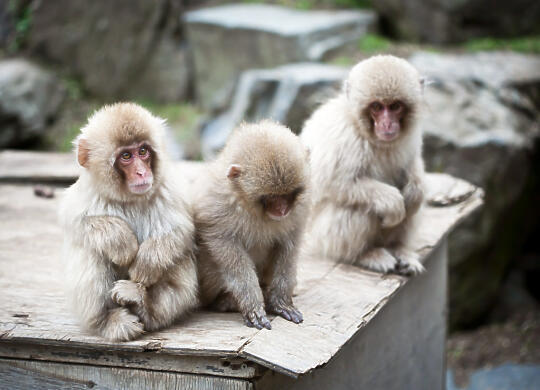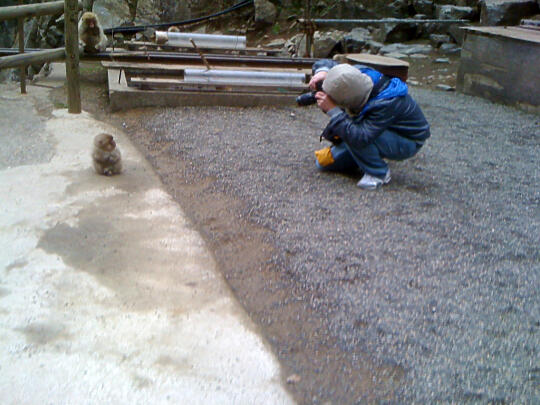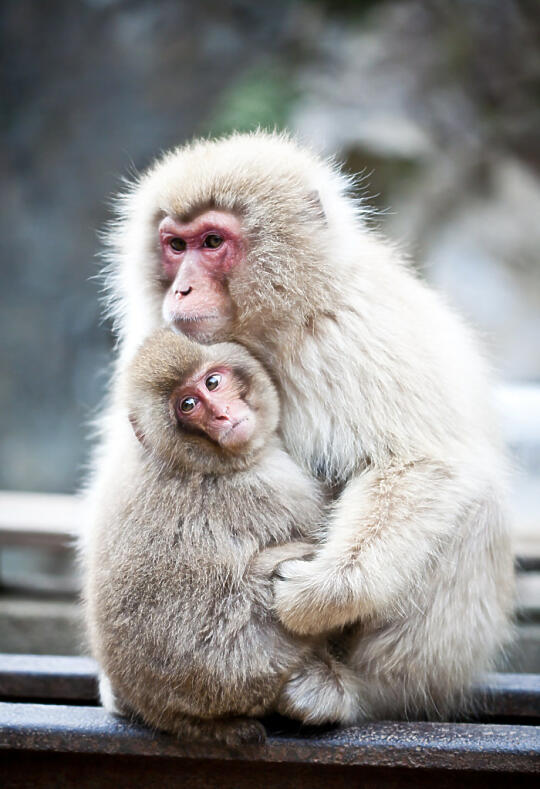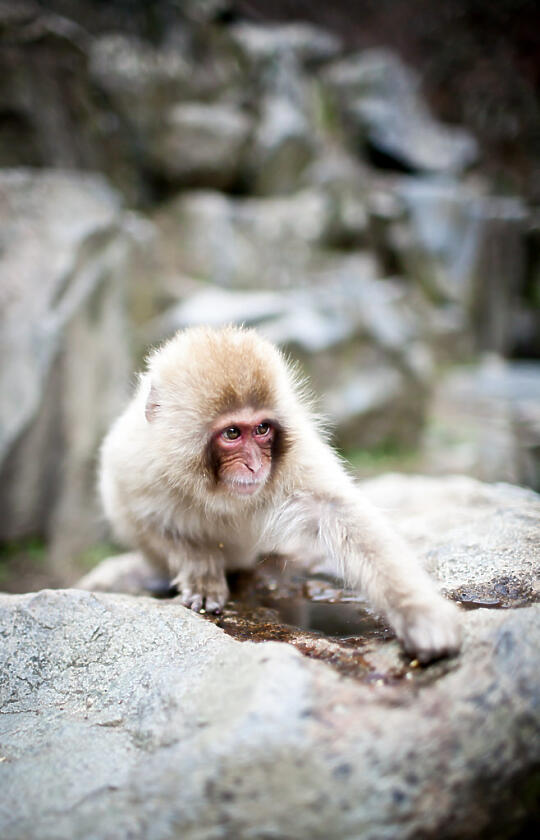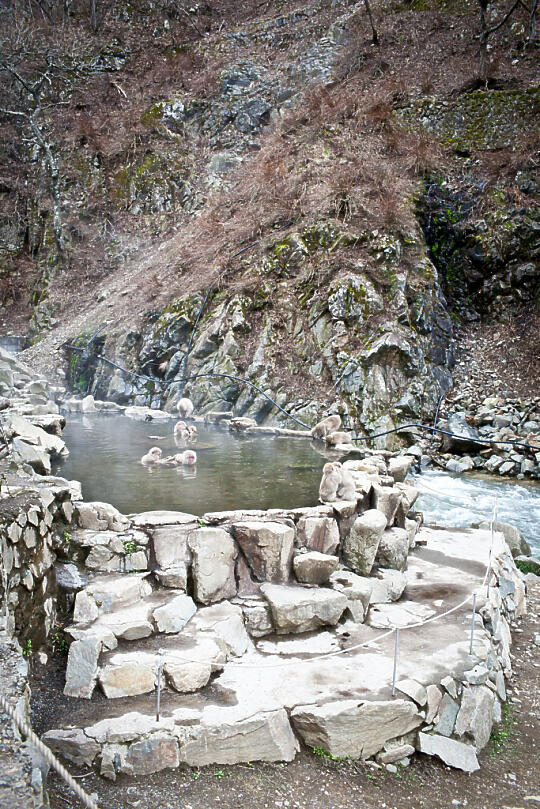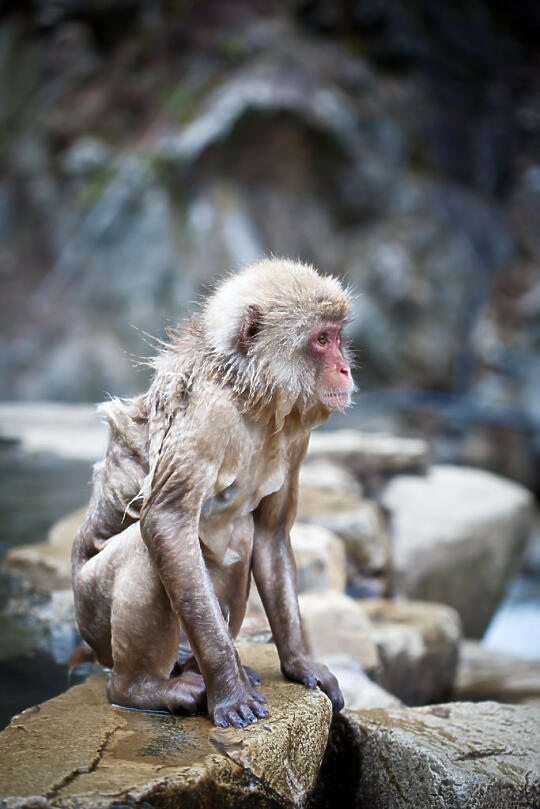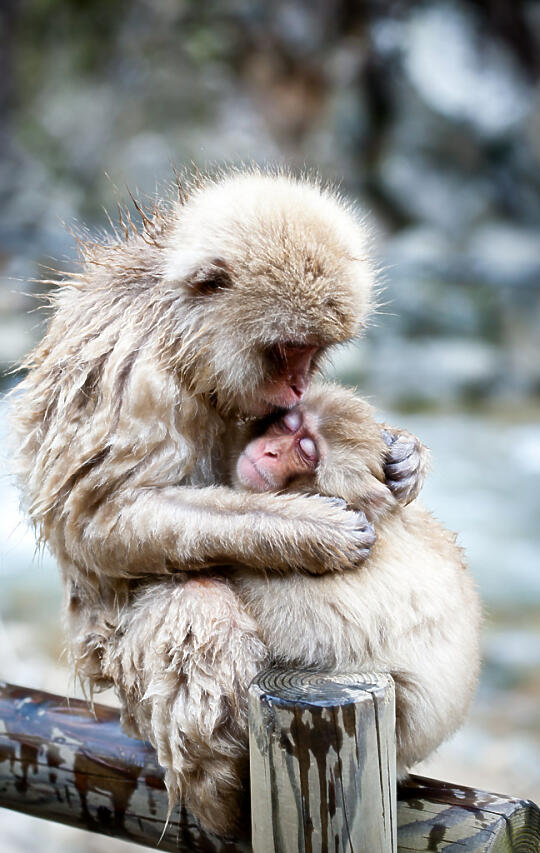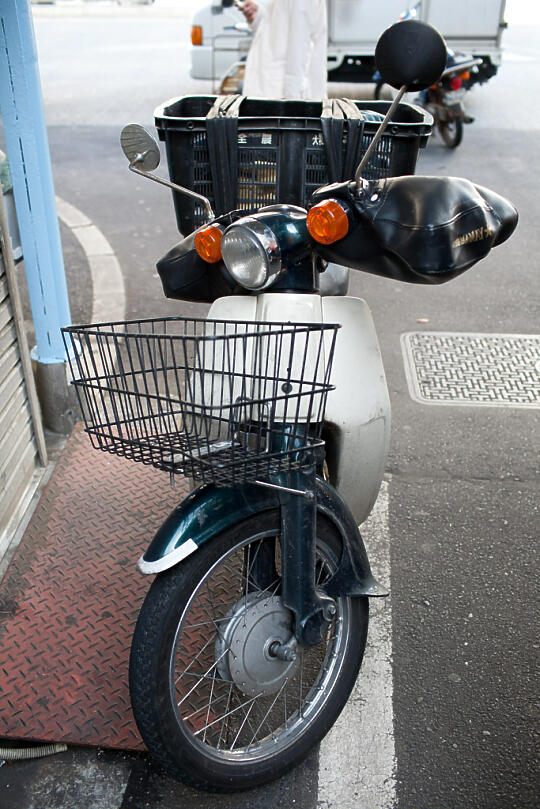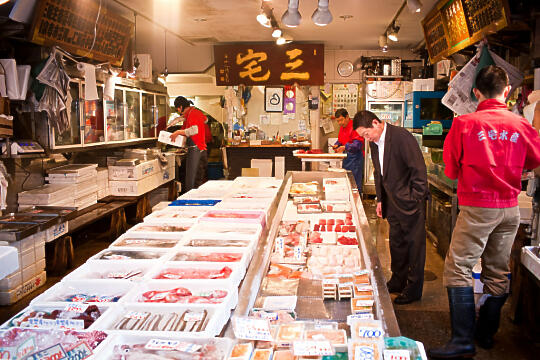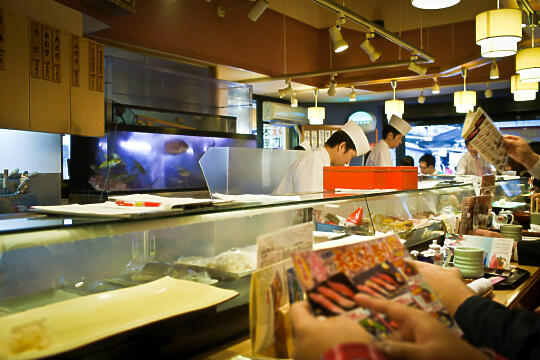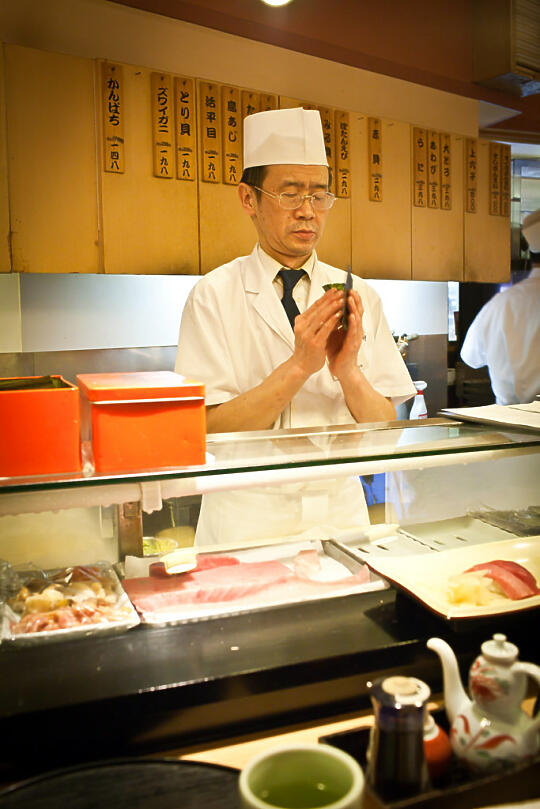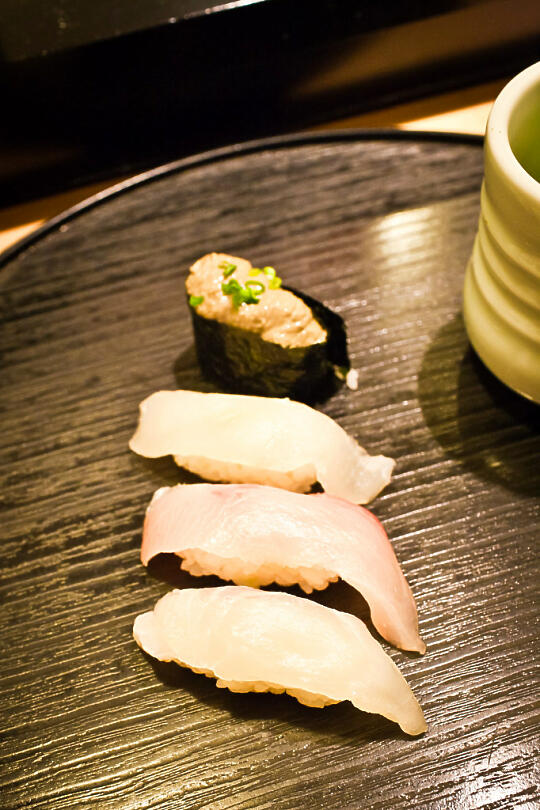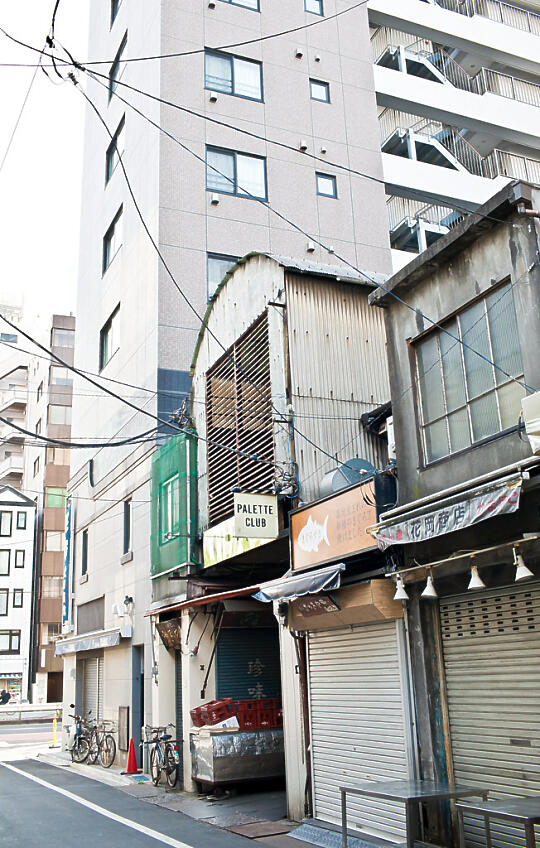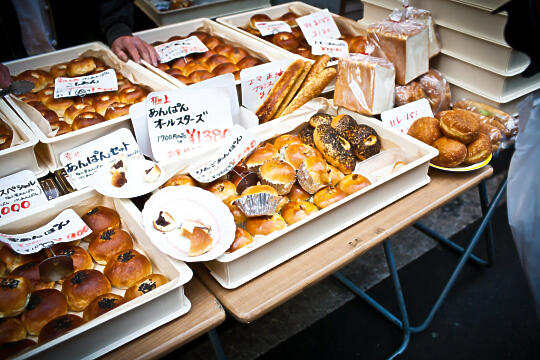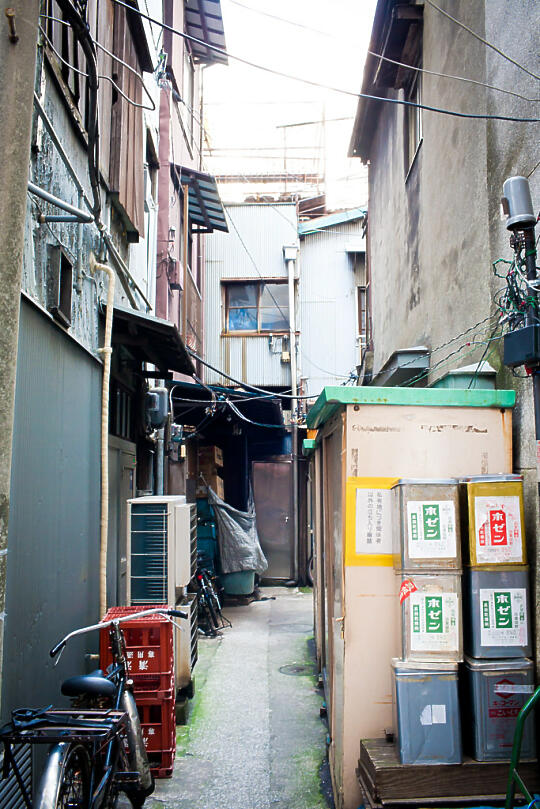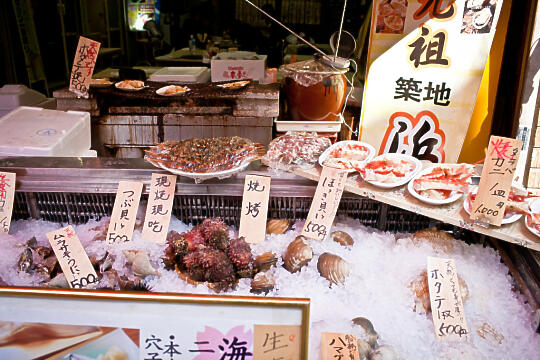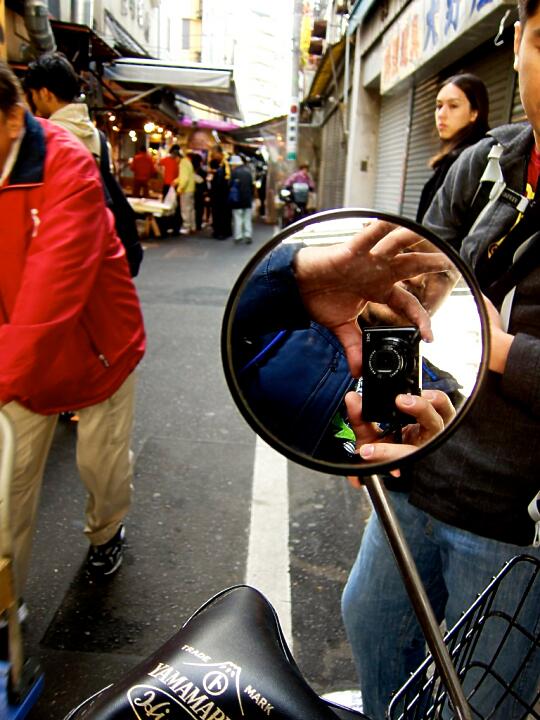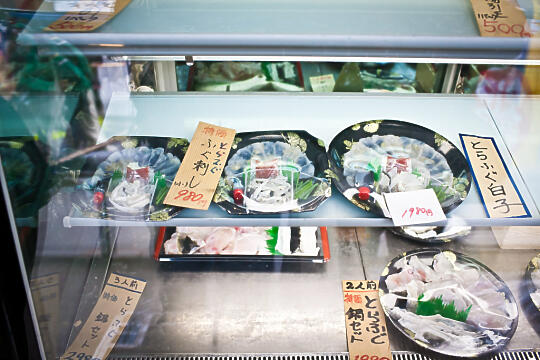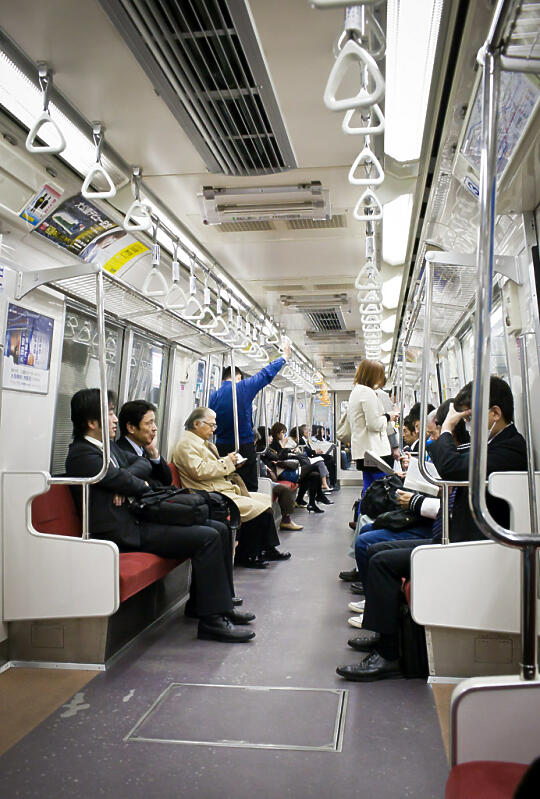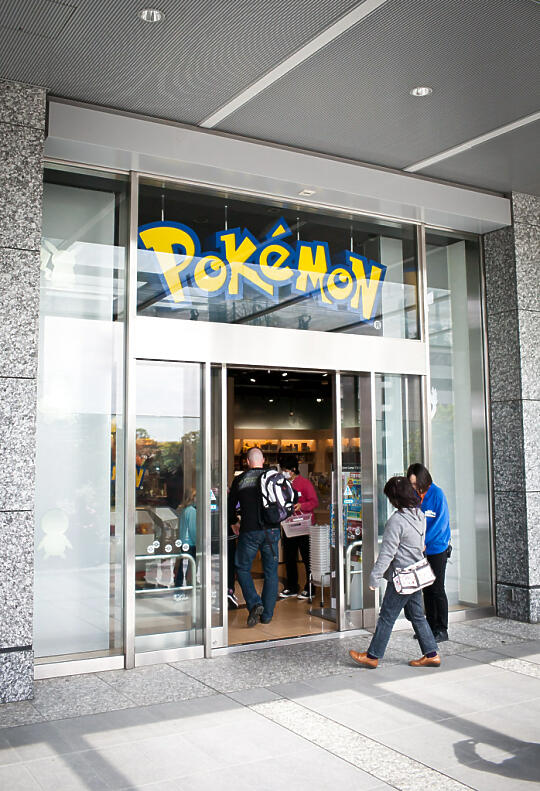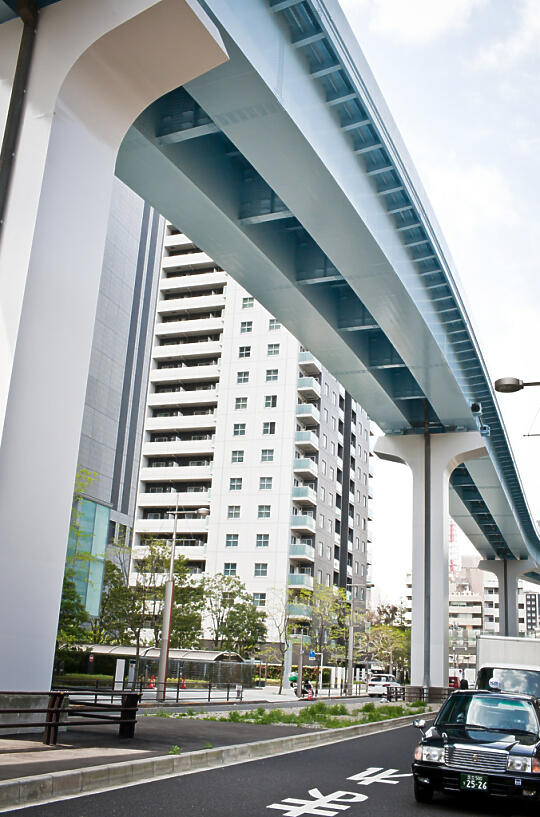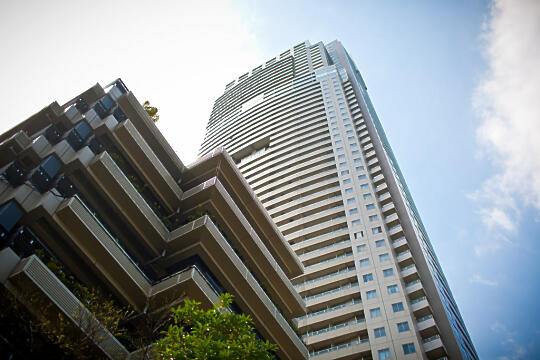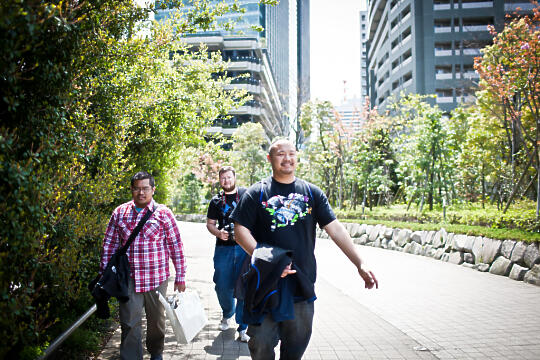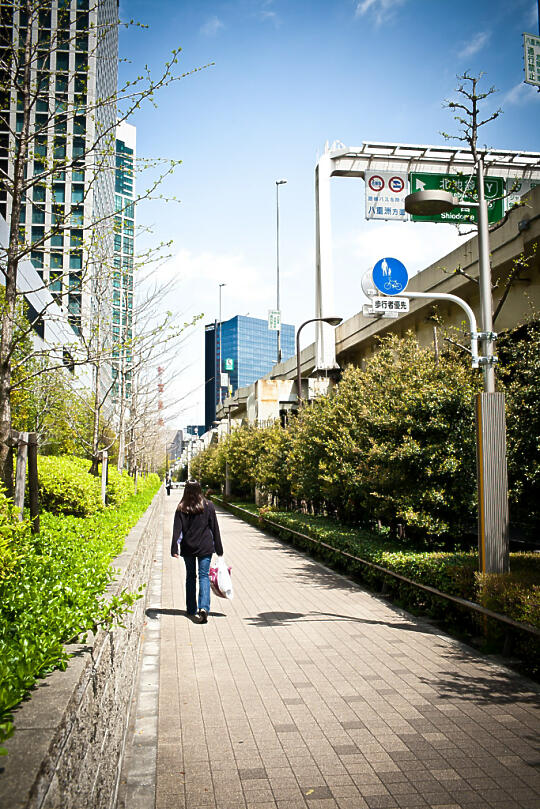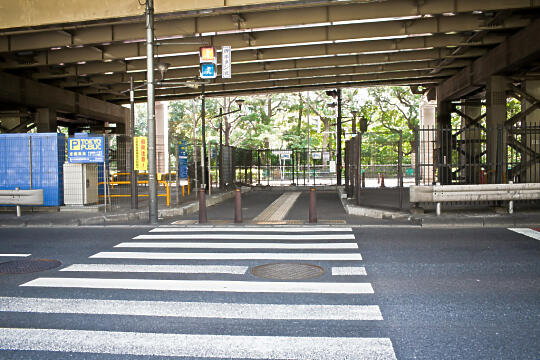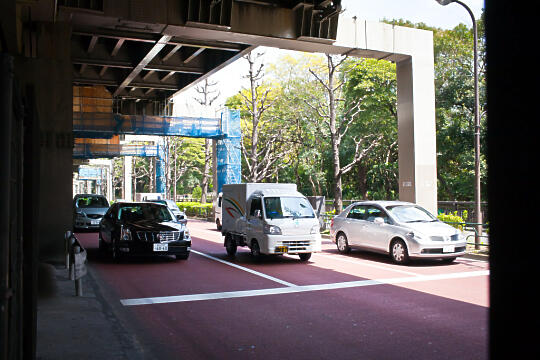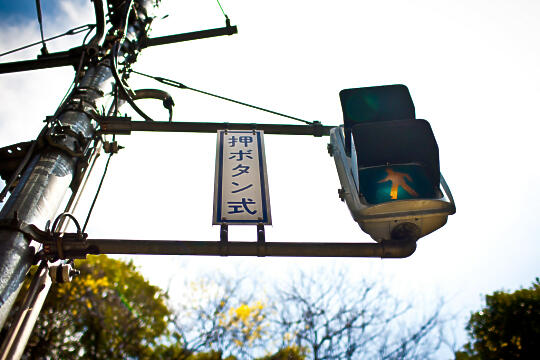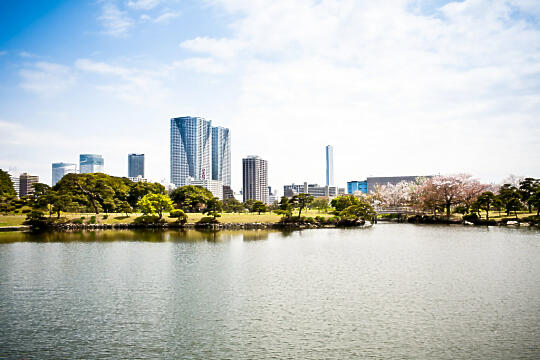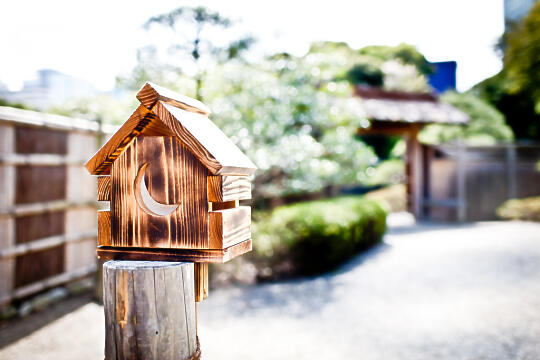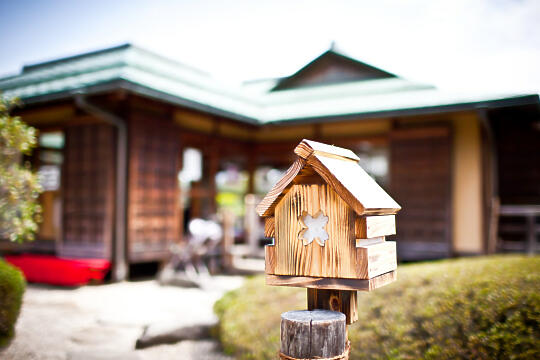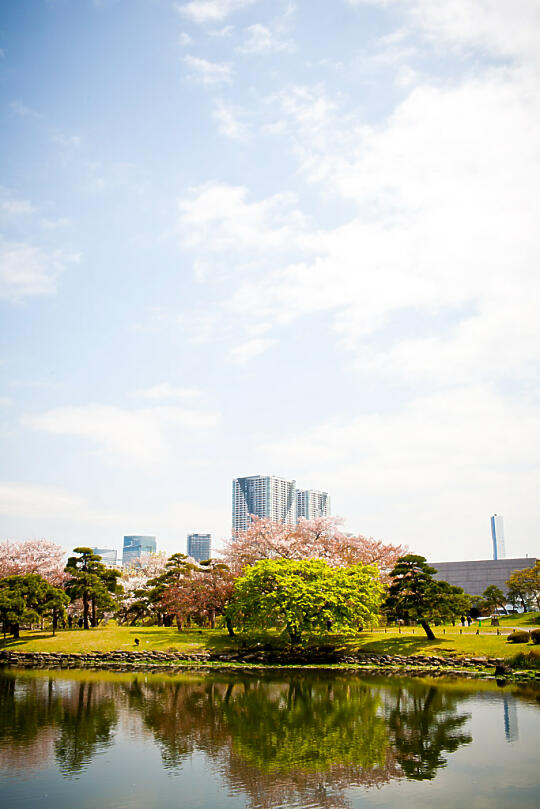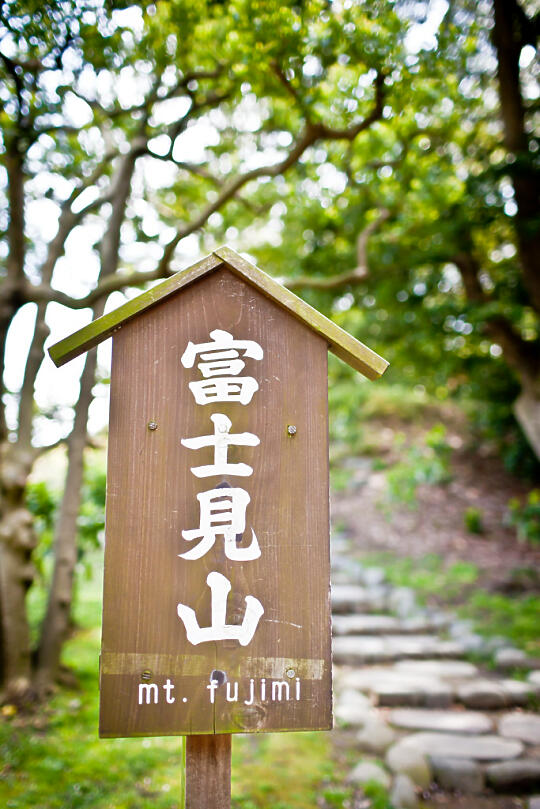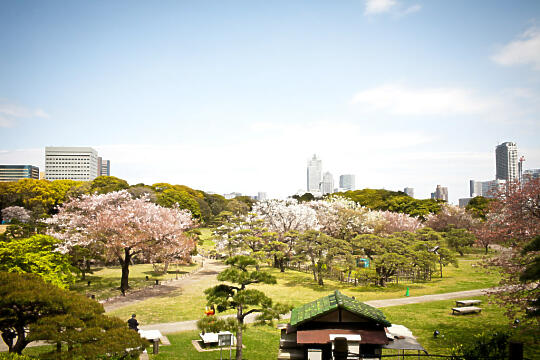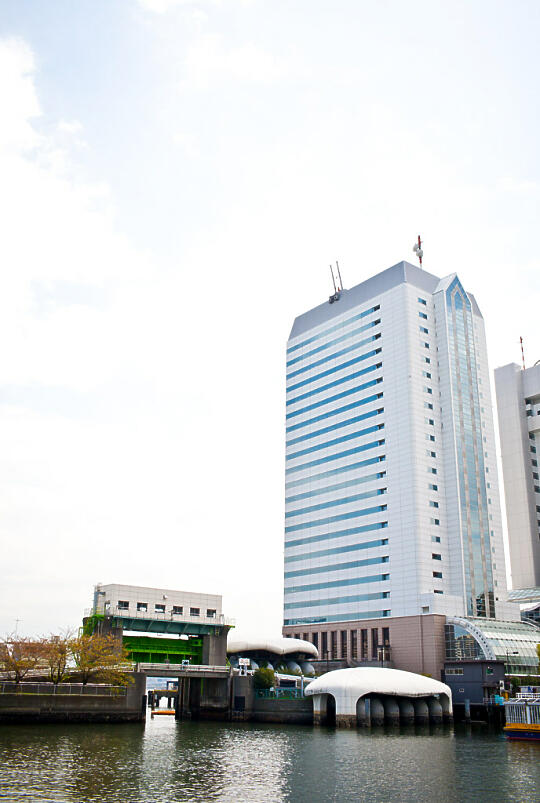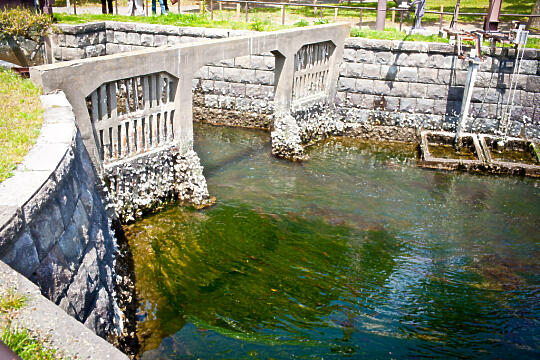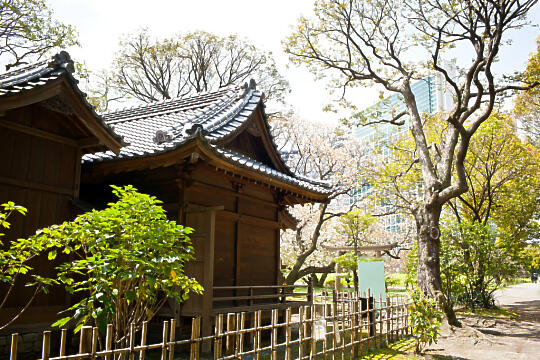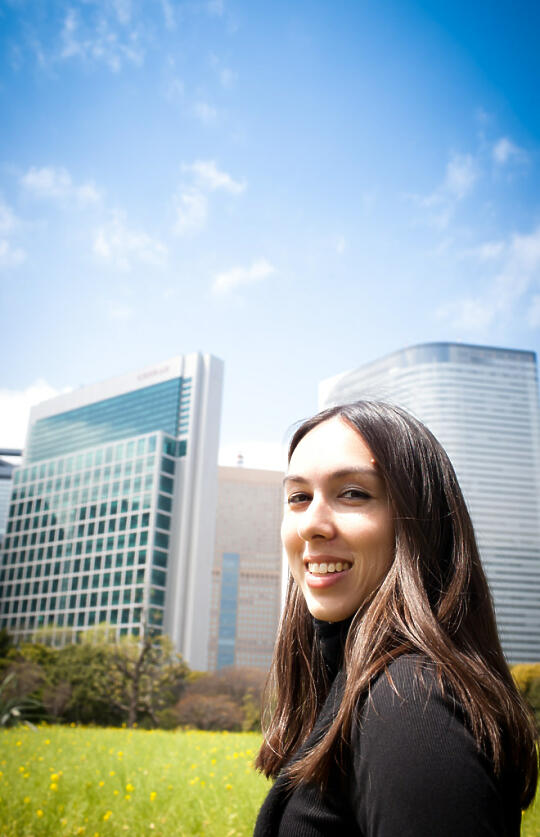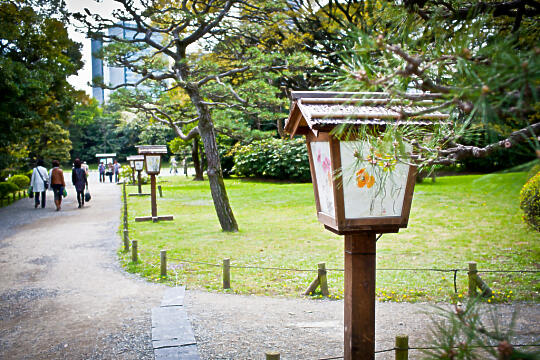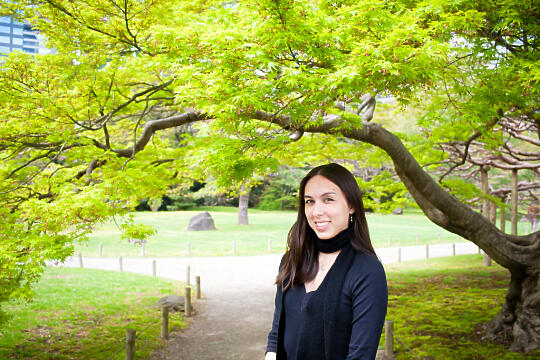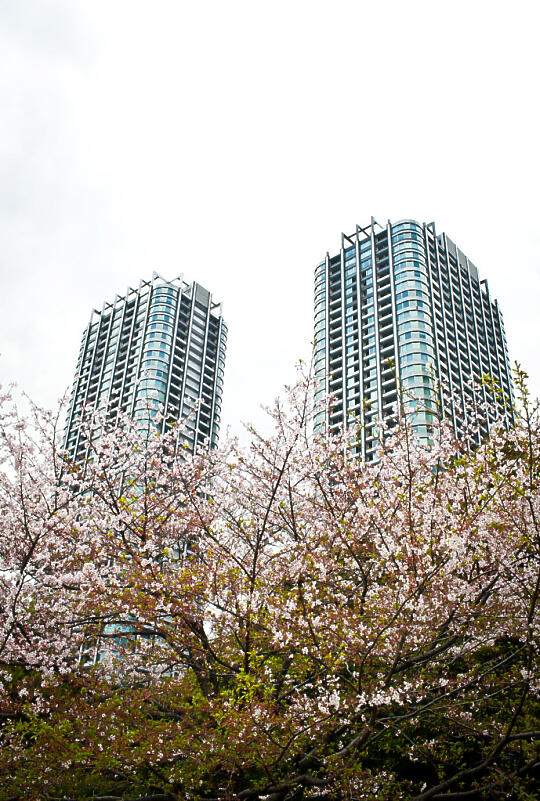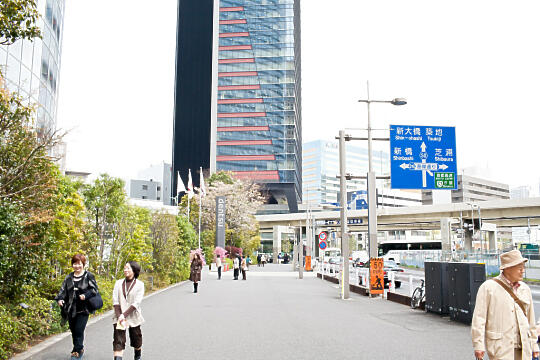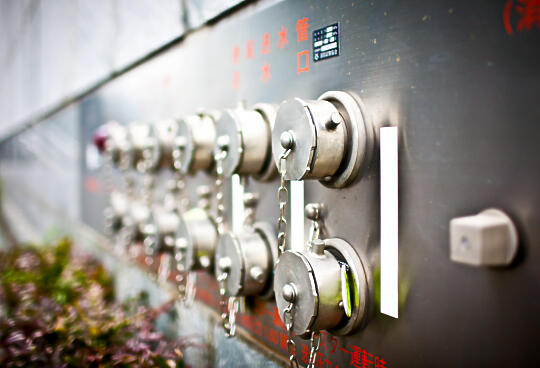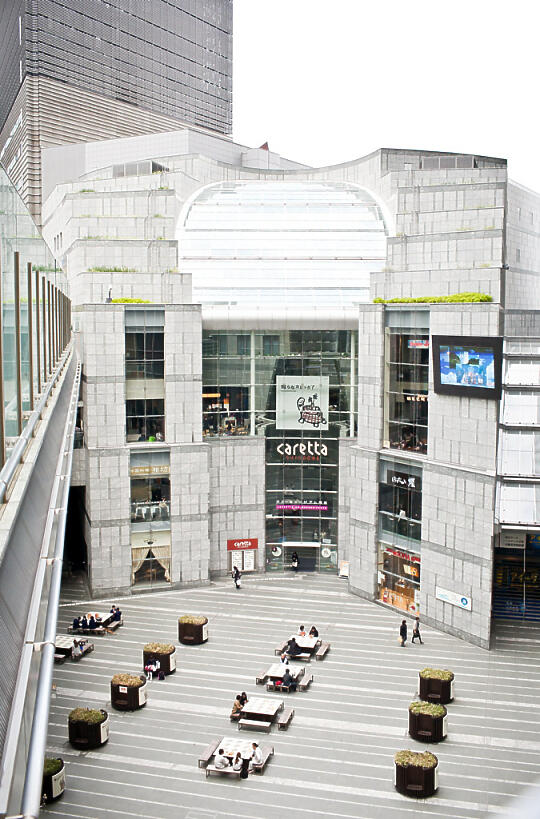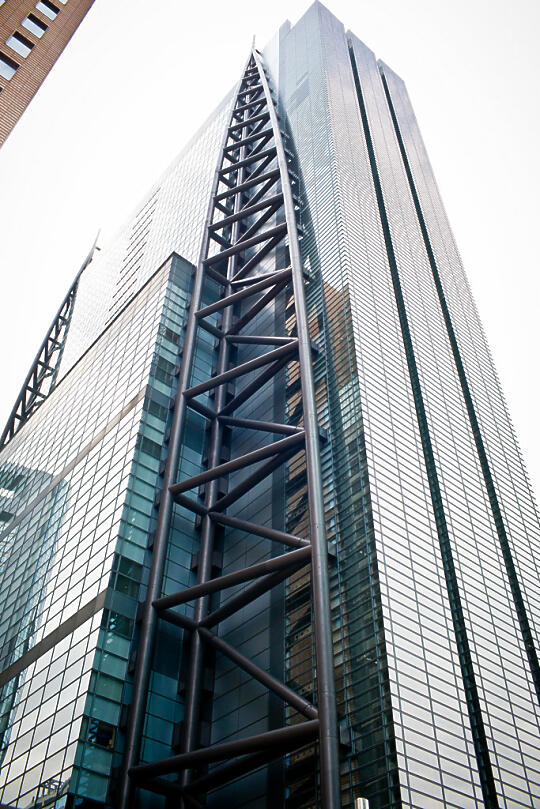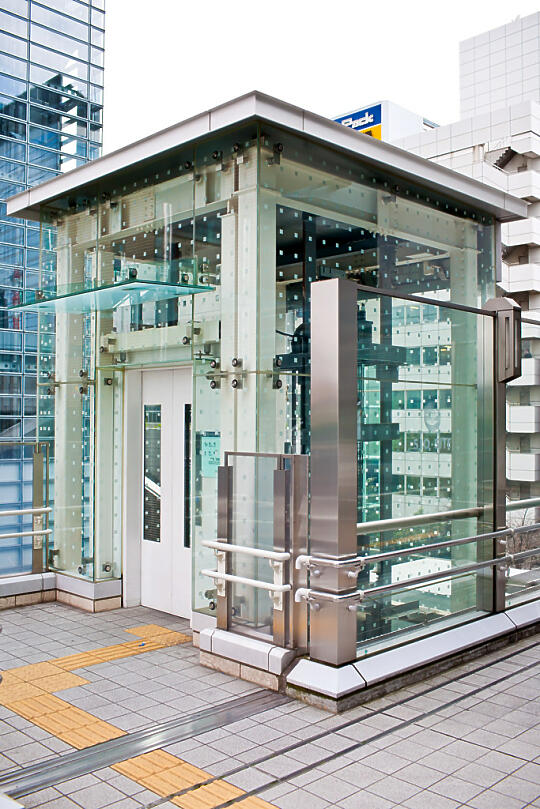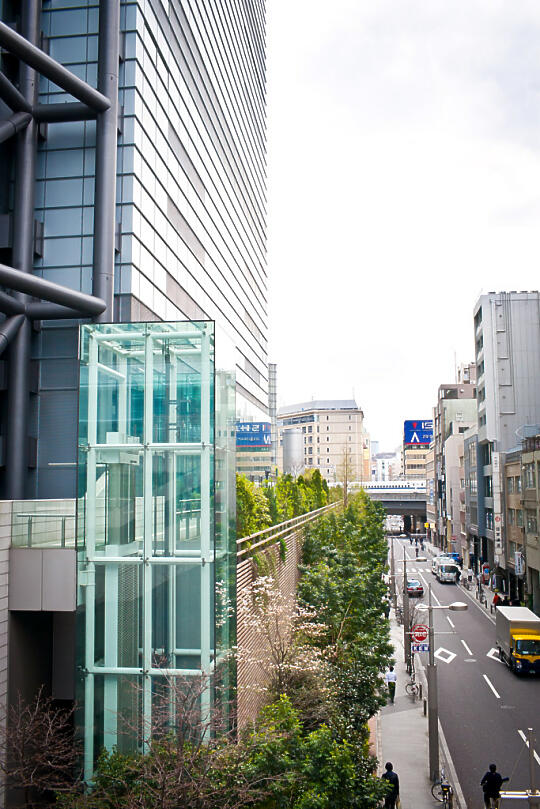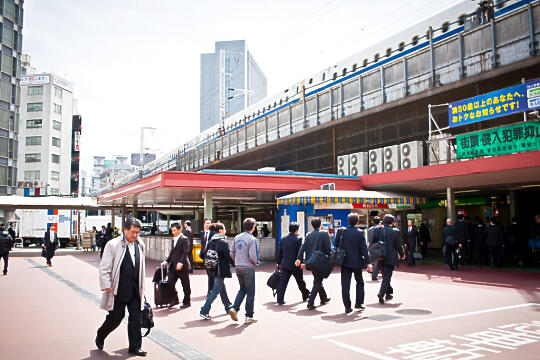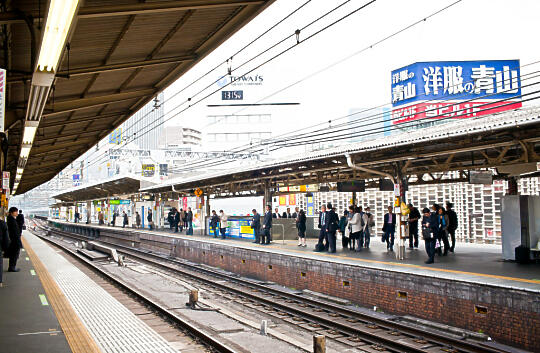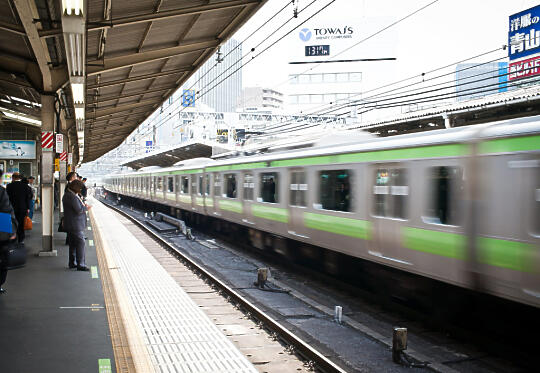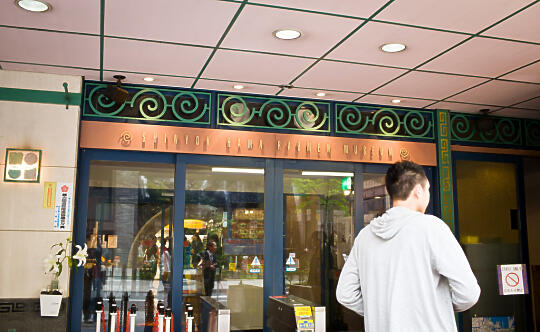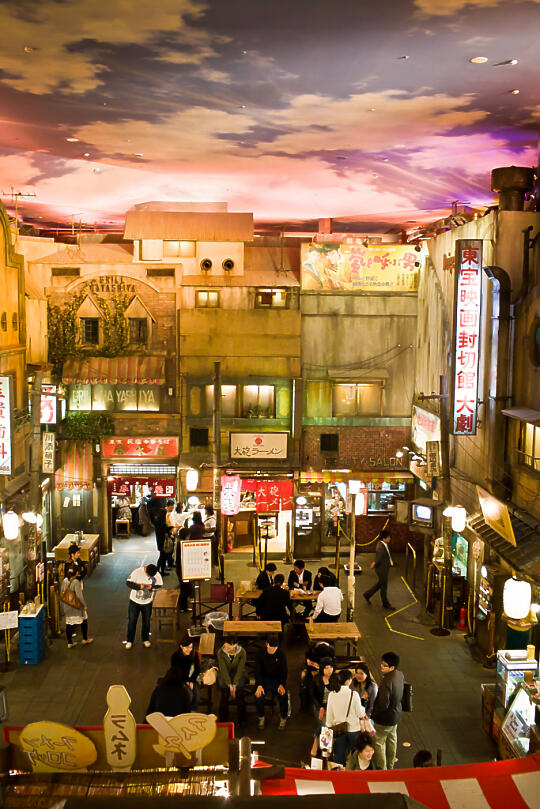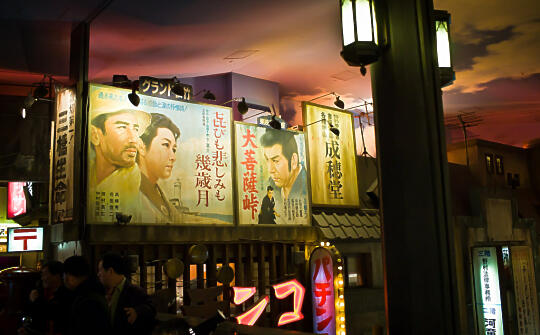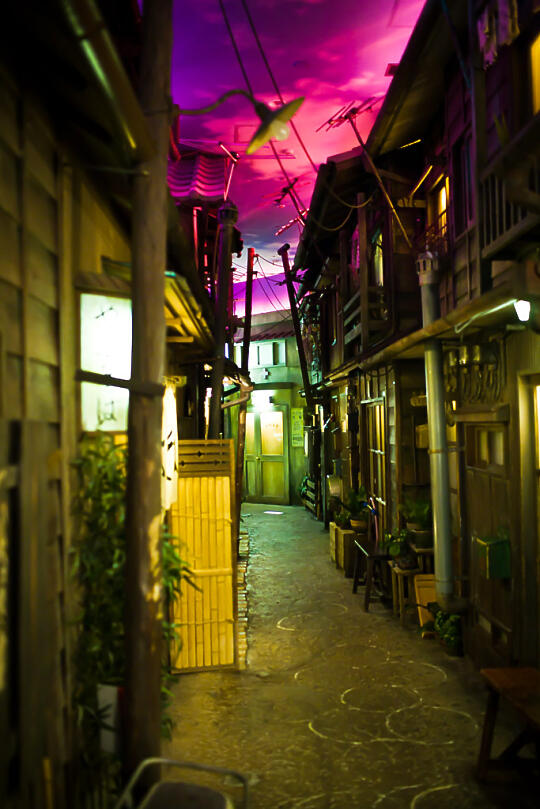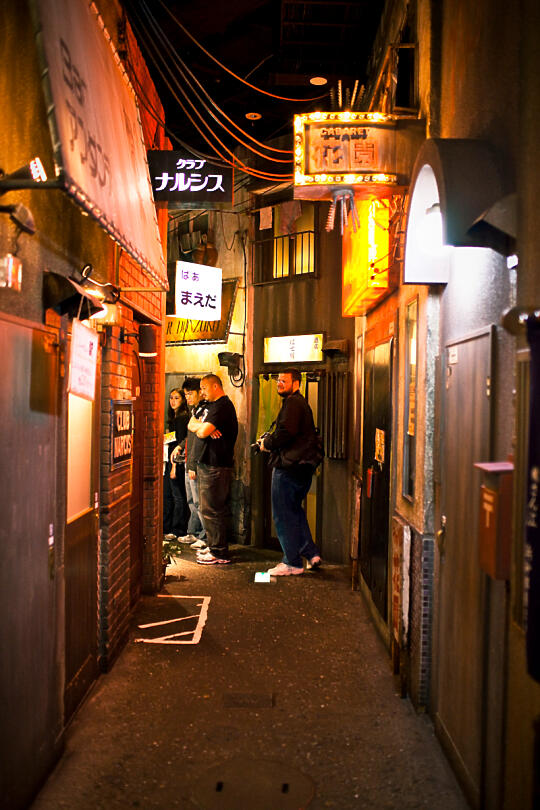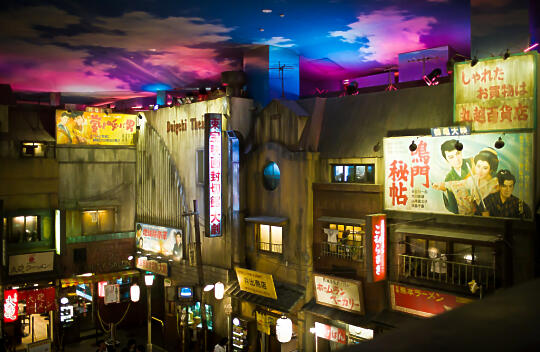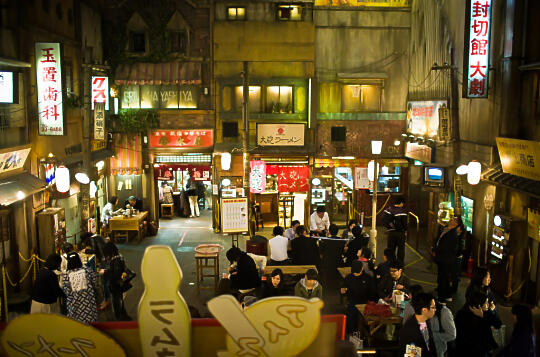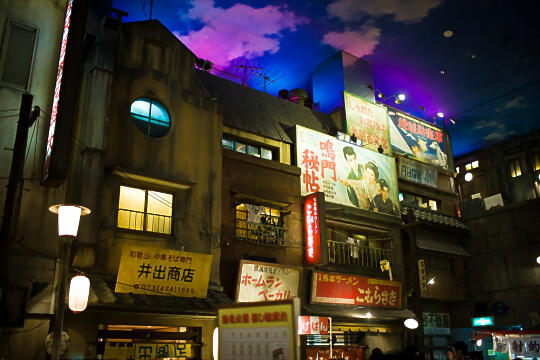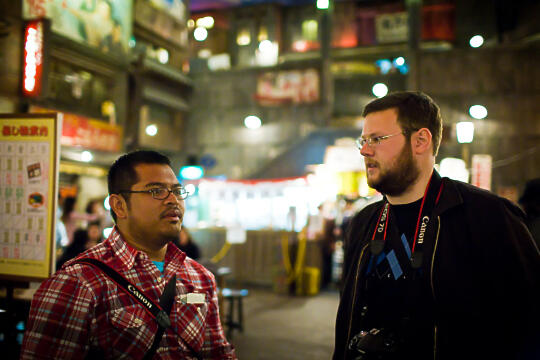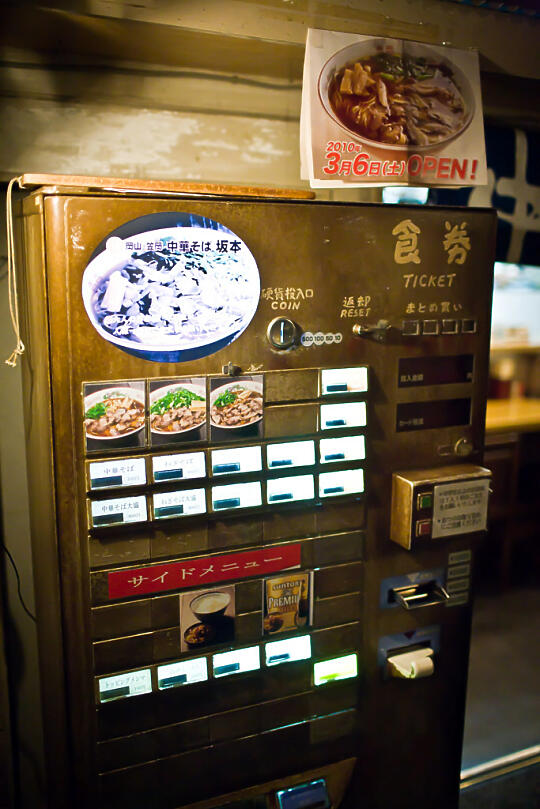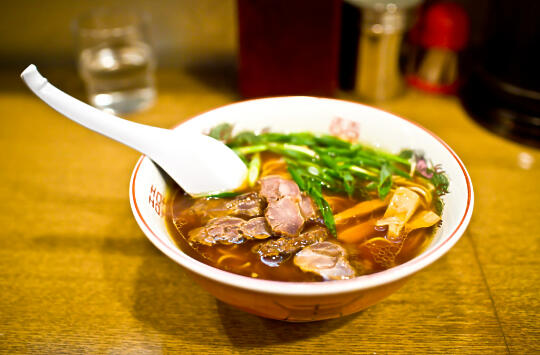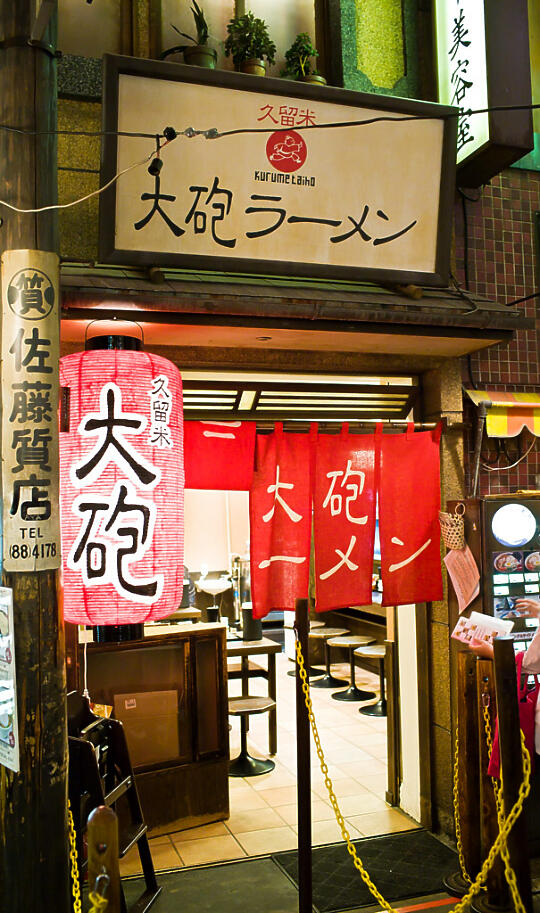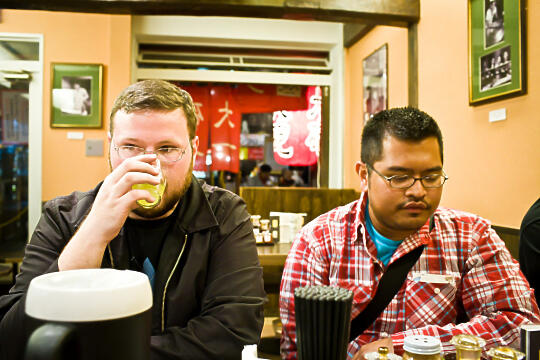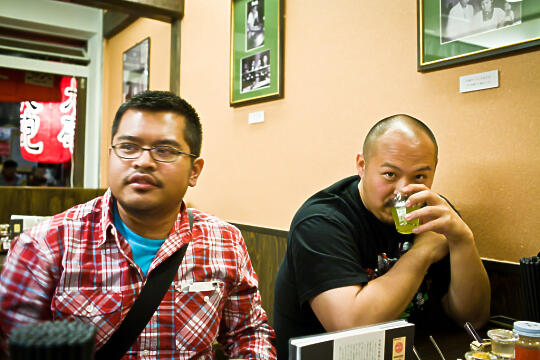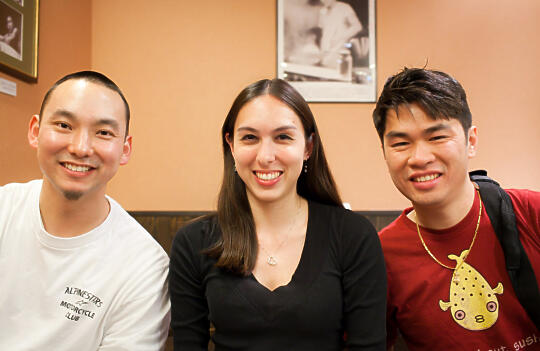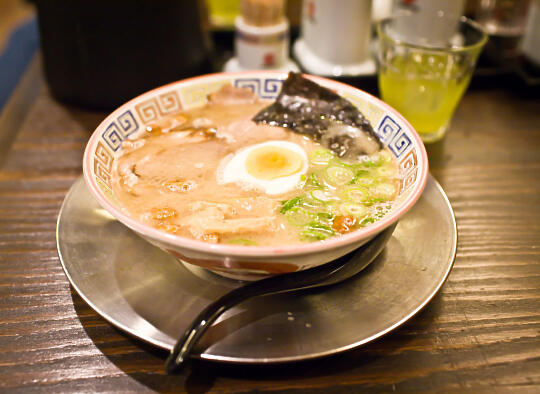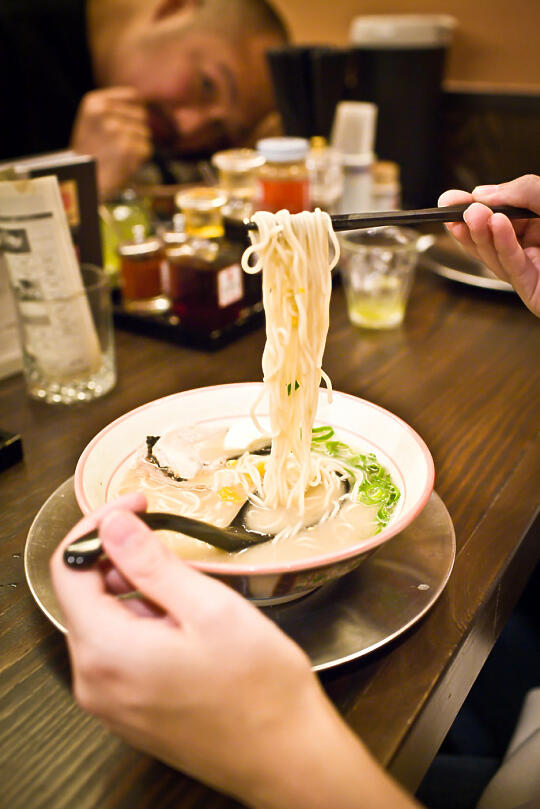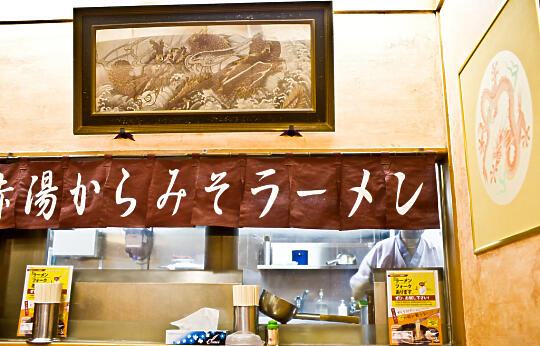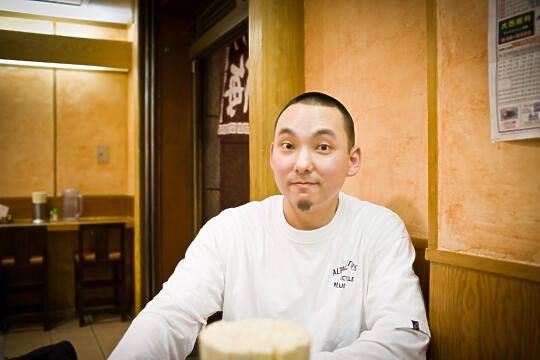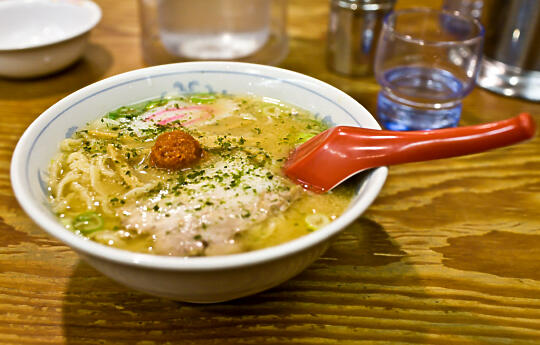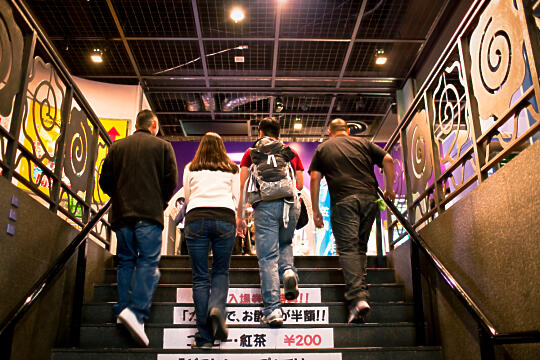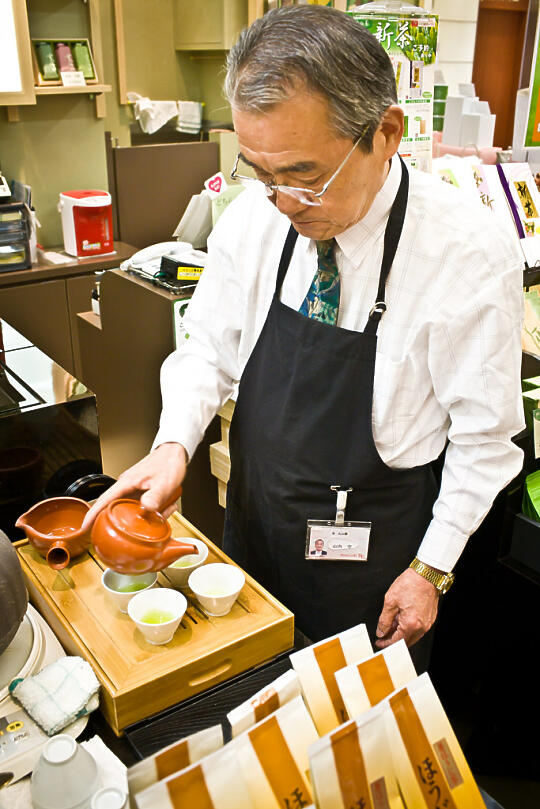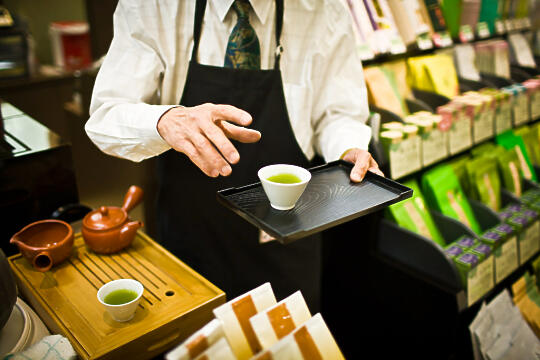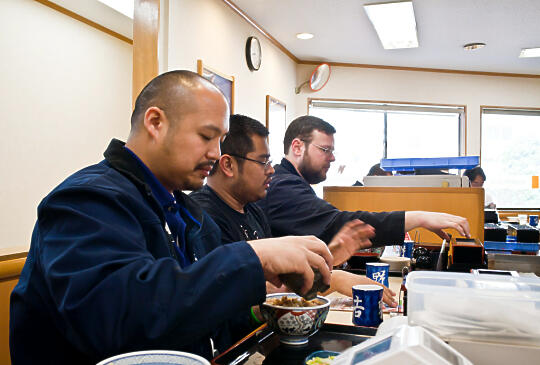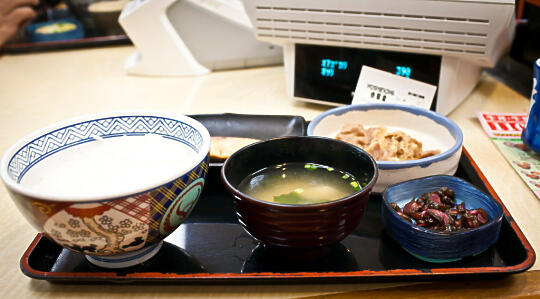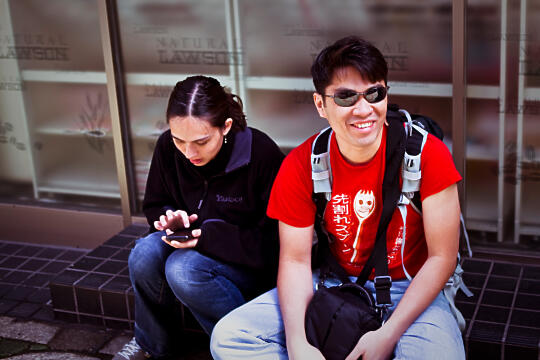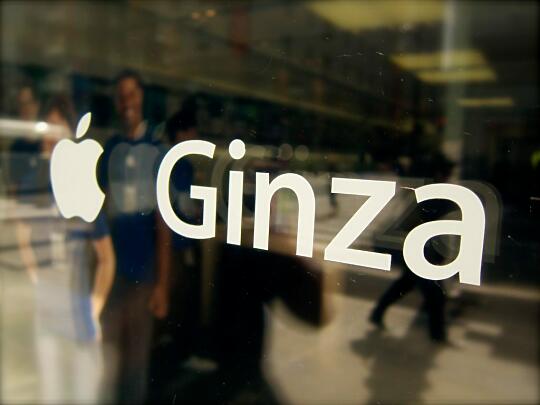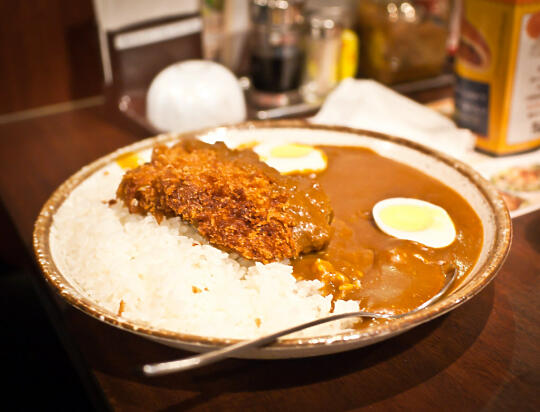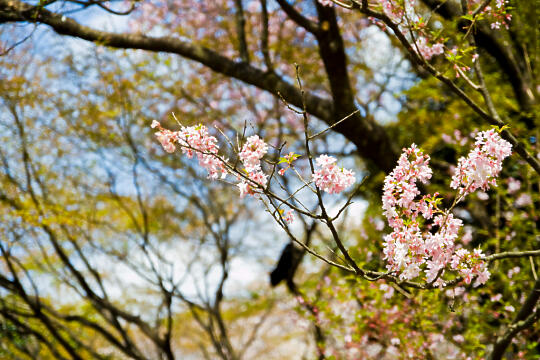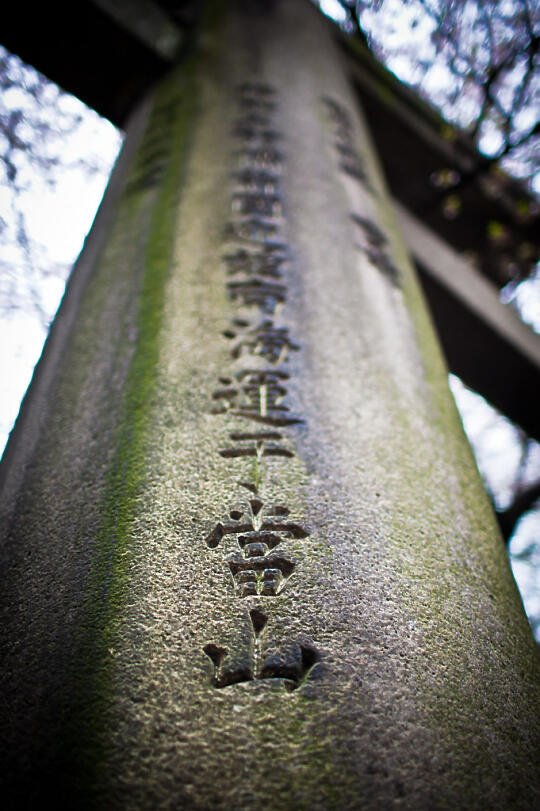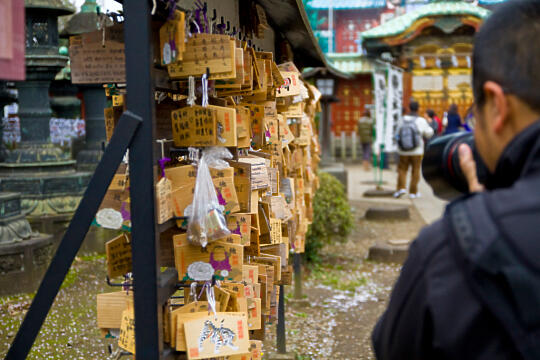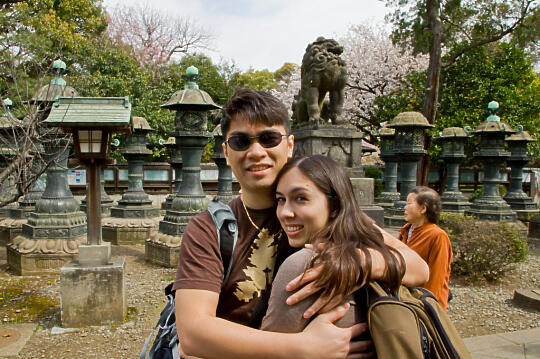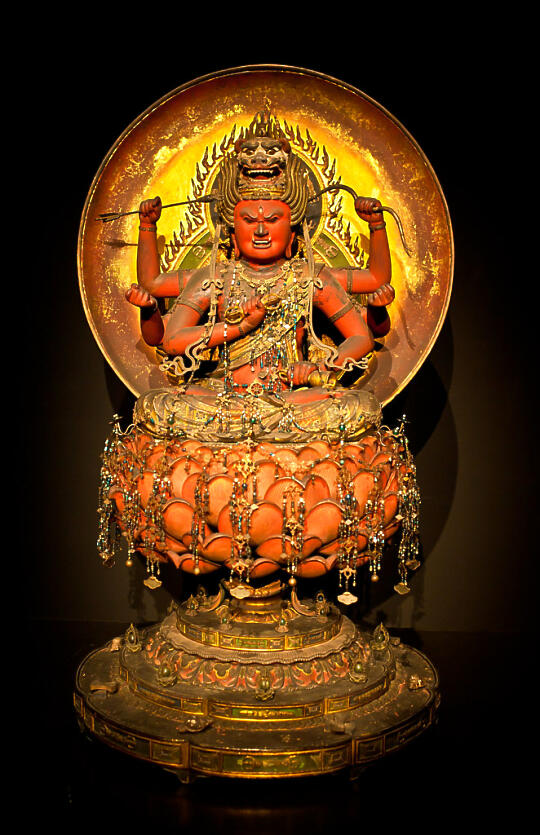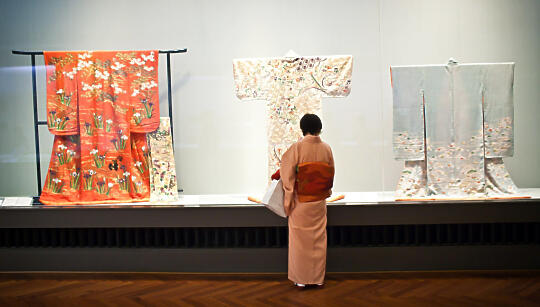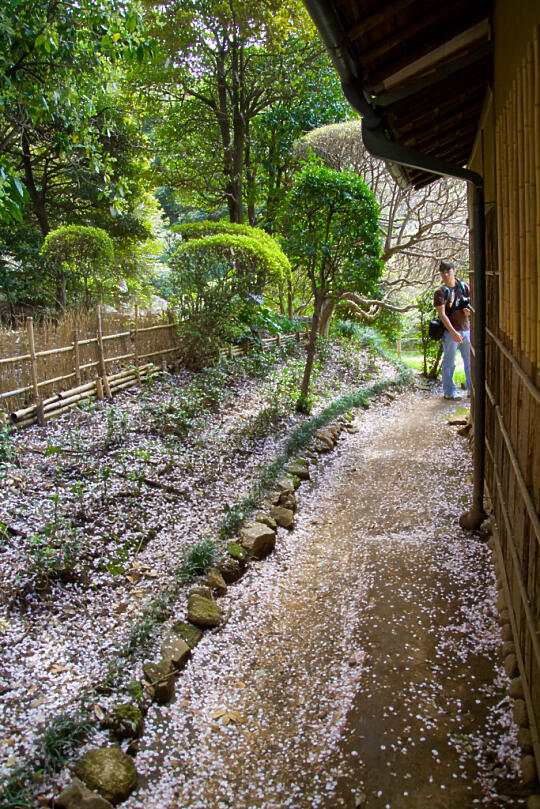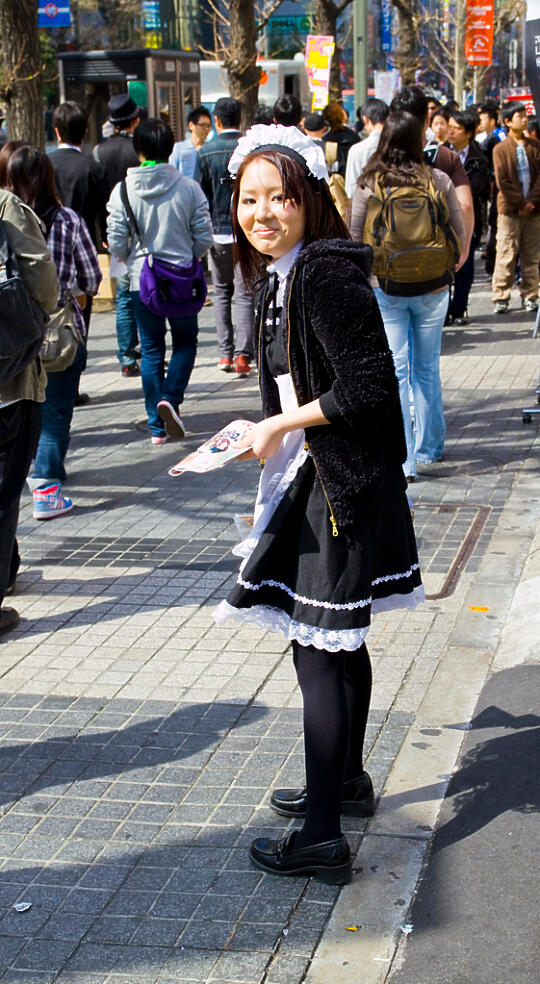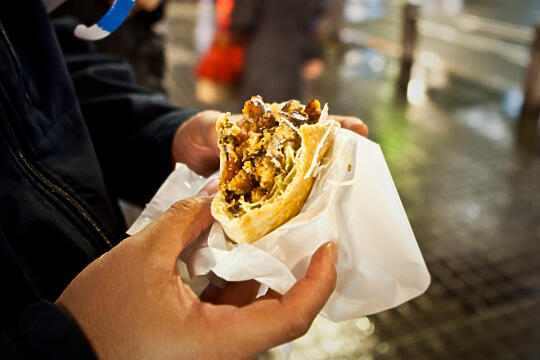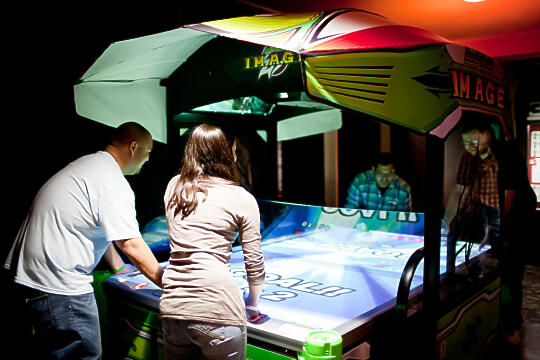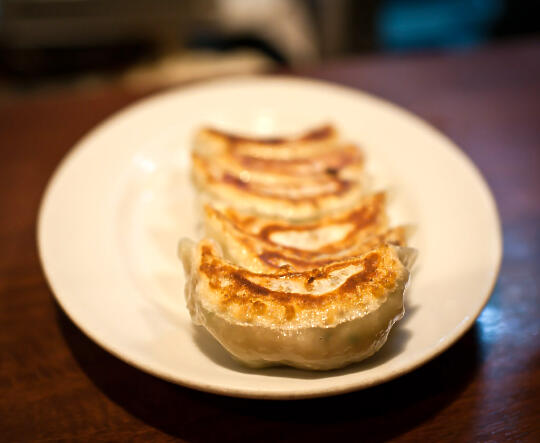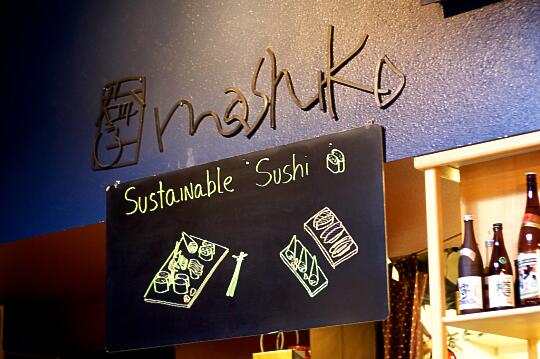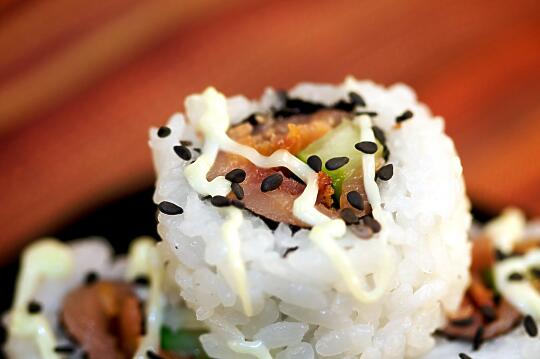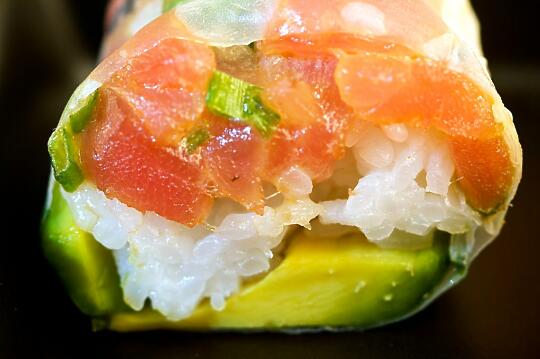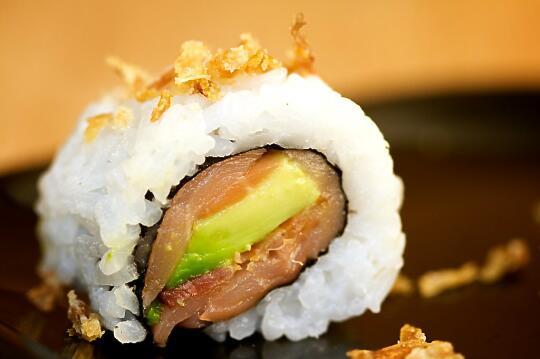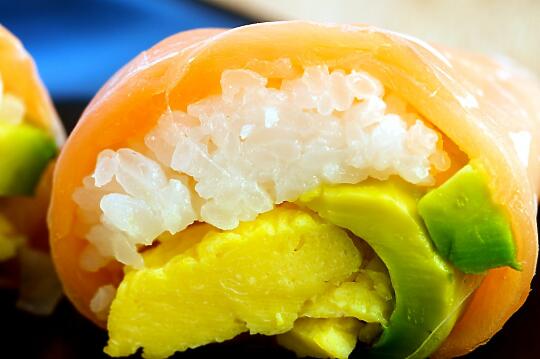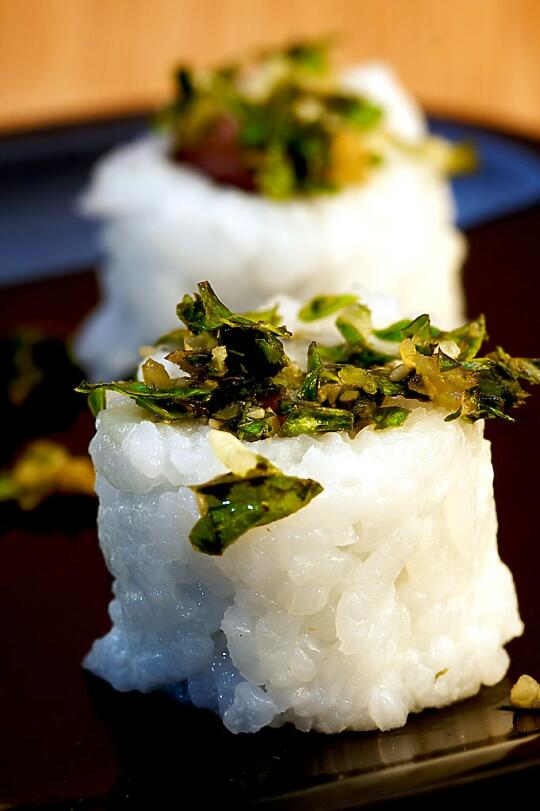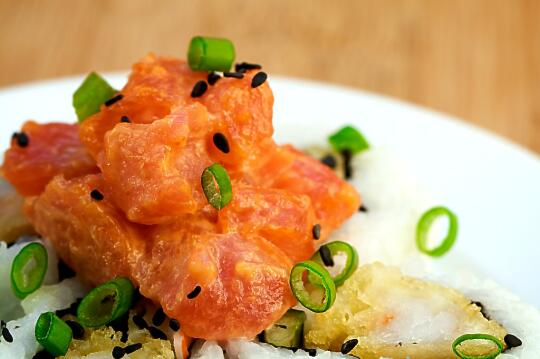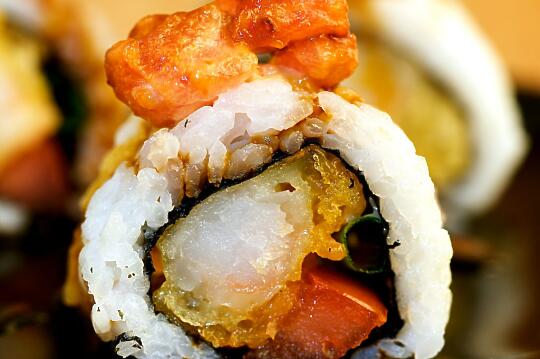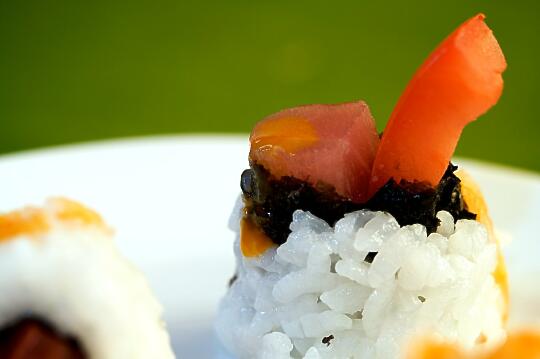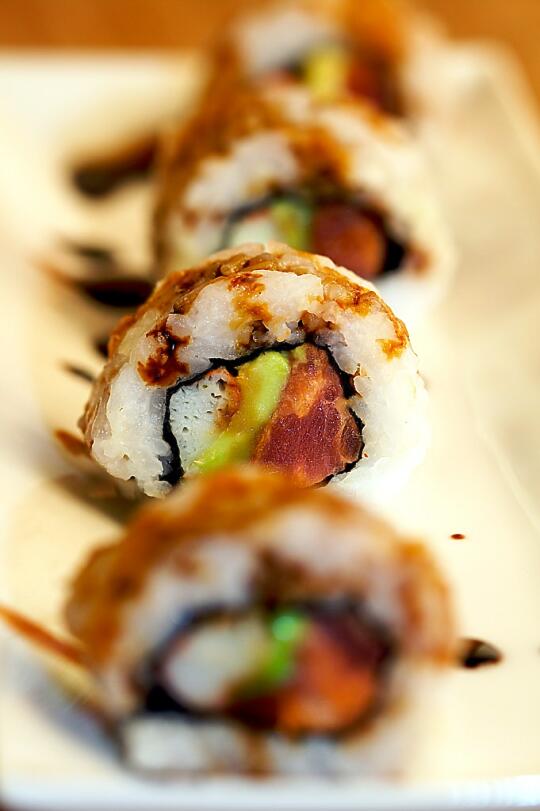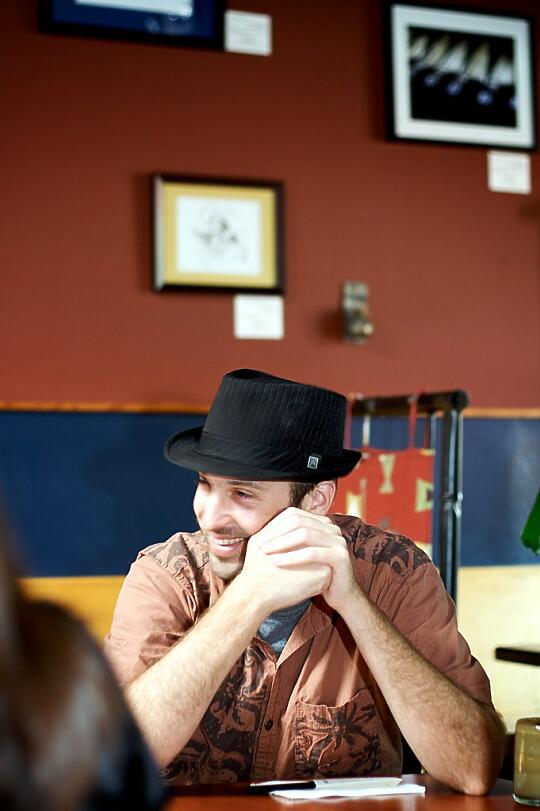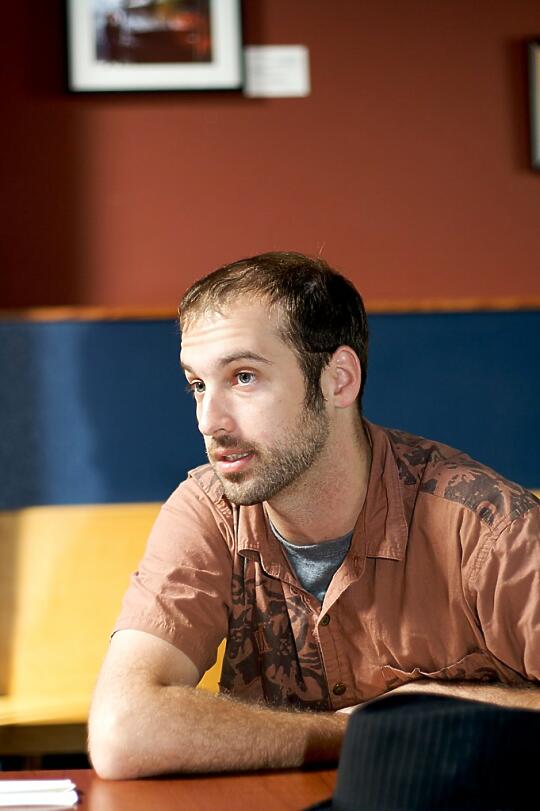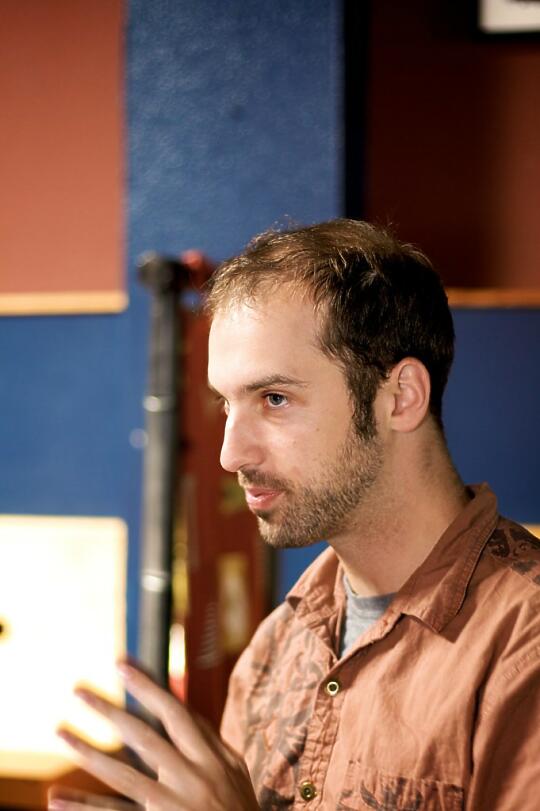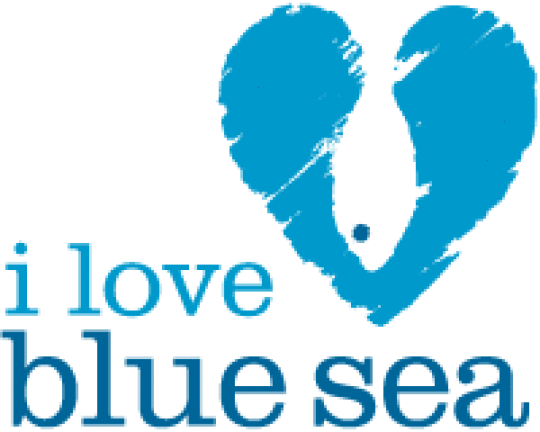
A couple of weeks ago, Son and I went up to San Francisco for BlogHer Food. Or rather, I went for the conference, and he just tagged along.
Since we had a wedding to go to for a dear friend of mine from high school the next weekend, we decided to make a road trip out of it, and stay up in San Francisco the week between the conference and the wedding. (If you care to see what else we did on our trip, all our (mostly food) photos can be found on my flickr.)
So what to do during that week in San Francisco?
Well, if you’re me, the answer is obvious. There are two things in San Francisco that I’ve been dying to do for months now – eat at Casson Trenor‘s sustainable sushi restaurant, Tataki, (review coming soon!), and meet the guys from I Love Blue Sea (who I would have gotten to meet earlier, at an awesome sushi party that Rachael invited me to, except I just happened to be out of town that weekend.)
So I tweeted Martin, the owner of I Love Blue Sea, and asked if he and the guys would be available to meet with me that week and do an interview. Happily, they were! So here, for your reading pleasure, are the photos that Son took that day, and the interview with the men from I Love Blue Sea.

Allison: Why sustainability? So many people are happy with the status quo of just… eating seafood, no problem, whatever… So what made you guys decide to get into the business of sustainable seafood?
Martin: I think the status quo is what sort of got us into the problem that we’re in. And if nobody does anything, if sustainable seafood doesn’t become the norm then there’s not going to be any seafood anyways, and the status quo won’t exist. Unsustainable seafood, by definition, can’t continue indefinitely. Which would be such a bad thing, because sushi- well, I don’t have to sell you on how wonderful it is. So, I mean… the oceans are such an… such an amazing thing, that’s it’s sad that over the past 50 years, they’ve been kind of decimated by commercial fishing. So there’s so many reasons why sustainable seafood is important. A billion people rely on seafood as their main source of protein. So for the developed nations to fish out all the protein that people rely on… that’s one aspect.

Allison: What personally made you want to get into it?
Martin: I love the oceans. I grew up here in the Bay Area, surfing, so I just love going down to the beach, I love fishing… everything about the oceans. And I would, you know… I’d like to be able to take my kids or grandkids fishing one day and be able to catch something. So I think that we’re at sort of this precipice right now, where there’s been a lot of damage done, but it’s not too late, there’s still a lot of hope for the oceans. And people have been really been kind of rallying behind the sustainable seafood movement. It’s gaining momentum, and it’s really encouraging to see. I don’t think it’s too late, I think that we can kind of return the oceans to a pristine state. That’s my hope, anyways.
Matt: For me it was, the personal reasons are along the same lines… I started surfing two years ago when I first moved to San Francisco, two and a half years now, and just completely fell in love with the oceans. Just being out with the animals, seeing, you know, a mama whale teach a baby whale how to slap its fins, swim with the dolphins and sea lions, it’s kind of really magical, so to think that that couldn’t exist for future generations and share that with my kids or grandkids really lit a fire in me, and I wanted to learn more and be part of a really serious solution to… well I guess not serious… a fun solution to a serious problem.
Martin: That is a magical image you painted there… frolicking with the dolphins! [laughs]
Matt: [laughs] No, it’s true… I saw a grey whale – a mama grey whale teach a baby whale how to slap its side fin, it was like one of the coolest things I’ve ever experienced. It hits home.
Martin: Tugging on the heart strings there… gonna make me cry!

Allison: [laughs] So how did you guys meet? How did you get into this business together?
Martin: Matt found us… online?
Matt: Should I field that one? Just kind of along the lines of falling in love with the ocean, realizing that was something I wanted to get into… I started doing a lot of research on my own, in terms of what was truly sustainable, what organizations were doing really good things, what businesses were out there, and slowly just through networking and working my way through everything, I found my way to Martin and Andrew, and now just kind of… here we are. So I called these guys one weekend… one Monday when I felt like maybe it was the right time, and Andrew picked up, and he said hey, come down to the warehouse and we were actually right here at the water chatting and he was just telling me all about what they were doing, and then he was like, “You have to meet Martin, he’ll be here next weekend,” and I met Martin, and… there it was. It was pretty cool how it all happened.
Martin: It was magical. [laughs] So much magic in the air!

Allison: So what about you two, [gestures to Martin and Andrew, who just joined the conversation], how did you two start working together?
Martin: Andrew and I have been working together since college. We went to the entrepreneurship program at University of Arizona together, worked on a project there. And then after we graduated, we started a business consulting firm where we would write business plans for green startups. We did that for a couple of years, and then I was like, man… I just started getting really passionate about the whole seafood thing, and I was like, “I want to start this company, Andrew, you wanna help out?” And he was like, “Yeah, I’m on board.” So it was kind of a natural progression. So we’ve worked together for, what, five years now?
Andrew: Five-plus years, I’d say.

Allison: Awesome… that’s really cool. So I didn’t get your answer to this, Andrew… why sustainability, and what made you want to get into the business of sustainable seafood?
Andrew: Sustainability, maybe because it’s easy to do, and not a lot of people are doing it. So it’s not only a no-brainer, but there’s a huge market opportunity there… so why not? And sustainable seafood… kind of from the fruition of Martin’s idea, it’s something, you know, I really liked the idea, started learning about it more, getting into it… I grew up on the east coast near the ocean, so I do have like kind of a natural inclination towards the ocean, so it was great to get back out of Arizona… I love it there, it’s beautiful, but it’s nice to be back by the water again.

Allison: So was it difficult to start a sustainable seafood business?
Martin: Yeah! It’s been a lot of work…
Allison: What sort of challenges did you meet, trying to start this?
Martin: The logistics of everything… getting fresh seafood from San Francisco to anywhere around the country, fresh and cold, there’s a lot of… a lot of planning that goes into that. We try to use all eco-friendly materials, so we’re kind of… well, I don’t know if we’re pioneering that, but I couldn’t find anyone else that was doing it. So… there’s a couple of people that ship seafood, and they all use styrofoam, and we categorically wanted to avoid styrofoam because there’s some crazy statistic about how most styrofoam ends up in the ocean anyways. So to ship sustainable seafood in styrofoam that was going to go into the ocean just seemed kind of… not what we were going for. So there’s the logistics aspect, the aspect of getting the whole… I’m not an engineer, so that was sort of a challenge, getting the website up and functional. Getting the word out has been not too difficult, actually. You know, people have really been sort of rallying behind the sustainable seafood movement, which is really encouraging to see. It gives us a lot of hope to see that people are sort of embracing this. Hopeful.
Allison: It’s looking good. It’s looking really good.
Martin: Yeah, yeah… it’s fun. We all really enjoy this.
Matt: We have a good time, that’s for sure. All the chefs and the foodies… everyone really gets it, you know? They’re all looking for someone to step up and give them a simple solution, and everyone I’ve spoken with is really happy to see the list that we’re providing to them that is completely sustainable. It takes the thought out of it for them and allows them to participate, and then pass that value on to their customers. It’s really important.
Martin: So that was the impetus for starting out, which is that one of the things about sustainable seafood is that there’s so many different factors that play into the equation of sustainability. The species – how abundant and well-managed it is; where it’s caught, how it’s caught; where it’s farmed, how it’s farmed… that it’s kind of difficult for the average consumer to go into a market or a busy restaurant on a Saturday night and ask your server, “Oh, well what’s the scientific name of this species? Are you sure it’s actually that? How was it caught? Where was it caught?” So we just try and take this on ourselves, and make it easy for the consumers to buy anything, knowing that it’s been vetted against third-party science. These aren’t our recommendations, we follow Monterey Bay Aquarium’s Seafood Watch – we don’t sell any of their red-listed items. We also use some of the recommendations set forth by Greenpeace USA. So we’re just trying to make it easier for consumers, and now we’re going up to restaurants and caterers, to follow those recommendations… as easy as possible.

Allison: That’s really great. So obviously you use Monterey Bay Aquarium and Greenpeace to tell which are sustainable and which you don’t want to sell. Do you look at these lists very often? Do you go over your list every now and then and say, “Okay, these are not necessarily sustainable anymore, or this supplier isn’t good anymore?” How often do you do that?
Martin: Yeah, we actually… consumers can be a big help to that too. Just the other week, we had someone write us and be like, “Hey, steelhead – wild steelhead is actually not that sustainable, I wonder why you guys are selling it?” And we were like, “Well, you know, it’s caught by these native tribes in Washington and Canada, and from our impression the stocks are pretty healthy, there’s not an advisory out by either Monterey Bay or Greenpeace…” But we looked into it a little bit further and it looked like the research was still kind of out. So we took it off our website, while we were looking into it more. So that was one example of where people can come to us and be like, “Hey, are you sure this is sustainable? Can you look into it more?”
Monterey Bay Aquarium updates their list either quarterly or bianually, so every time that comes out we look at it. A big one just came out a couple months ago and the big thing was that California and Oregon salmon – wild salmon – are no longer sustainable. So we source all of our salmon from Alaska. And Casson helps out with that as well, you know Casson is always up for helping people be more sustainable, as you know.
[here we took a quick oyster break]

Allison: How do you feel about farmed seafood? Some people are like, “That’s great, farmed seafood is wonderful.” Other people are like, “That’s not sustainable at all, we don’t want to do that.”
Martin: Sure… well, it definitely depends on the species that’s being farmed, and the method in which it’s being farmed. So some things, like these oysters [that we just ate] were farmed, but they’re filter feeders – they actually clean nutrients out of the water, and leave it cleaner. So shellfish are one of the best things you can eat – one of the most sustainable options, because they’re actually good for the ocean. There are some other things, like farmed salmon, that aren’t so good, and some of the reasons why are: they escape and they’ll breed with the wild populations; the ratio isn’t that great – they actually catch wild fish and feed them, and the ratio’s actually unfavorable so it’ll take a couple of pounds of wild fish to a couple of pounds of protein out, so it’s a net loss of protein; oftentimes they use a lot of chemicals and antibiotics, which pollutes the water. So it definitely depends on what and how. But there are some wonderful alternatives for farmed seafood. And I think last year was the first time in the history of the world where more seafood was farmed than caught wild. So I think that because the population is growing and we eat more seafood, I think that’s sort of where the industry is going, and I think it has to go that way, but as long as we’re smart about it, I’m all for it.
Allison: I know Casson was talking about some salmon that was farmed inland… he was talking about this last year, at the dinner at Mashiko. I was wondering if you guys know anything about that… if you use it?
Matt: I actually just got off the phone, I was just speaking with FishChoice, and he was talking about that salmon that you just mentioned. And it’s the closed containment raising of the fish… so they have the tanks, it’s inland. When the waste is sent out, which is a huge concern when they’re upstream of ecosystems, they have a drum filter, and then it feeds into a wetland, and all the waste and excrement is completely strained out by the time it gets to wherever it is the water goes. So that’s something we’re going to look into. To be continued on that one, but Rich definitely talked about that specific farm, and now farmed salmon in the US is now a green item, as long as it’s closed containment on Monterey Bay Seafood Watch Guidelines.

Allison: Okay, so I have some not so serious questions for you…
Martin: Whew!
Allison: [laughs] Pressure’s off! So for each of you, of the products that you sell, what are your favorites?
Matt: [whispers] Don’t make me go first…
Andrew: I like the oysters. But of the fillets, I like the king salmon a lot. It’s good stuff… I like its texture.
Martin: I’m going with uni… I love uni. And… the belly of albacore. Just sashimi style, is my favorite.
Matt: Hm… so I really like our… I’m a big scallops fan. We have two delicious Hokkaido scallops from Japan. Sashimi-style, those are fantastic, or just however you like to prepare them. And I’ve been recently been eating more yellowtail… really delicious yellowtail, I think. Yeah, I think those are my two go-tos right now.

Allison: Any recipes you’d like to share?
Martin: Sure, we’ve got some recipes on our website…
Allison: Oh, well that’s cheating.
[everyone laughs]
Andrew: We’ve got a secret recipe that we can share with you..
Martin: The black cod? Yeah, go for it!
Andrew: One of our suppliers… he’s Asian, and his mother used to make a recipe with black cod. She would first salt the cod and put it in the fridge for a couple of hours. Then she would kind of splash it or kind of douse it with sake. Then top it with diced fresh ginger, diced spring onions, and wrap it in foil and steam it for 15 minutes. It comes out delicious.
Martin: It’s really good.
Andrew: The aroma… and the texture of the black cod is really nice. It’s a really good recipe.
Allison: That sounds delicious.
Son: We should try that.
Allison: [laughs] He loves black cod.
Martin: Nice!
Matt: Well there you go!

Allison: What are your favorite sushi restaurants… anywhere?
Martin: I gotta give a shout out to Tataki, obviously. It’s really good.
Andrew: Have you gotten a chance to eat there?
Allison: Not yet. Been meaning to, but haven’t gone yet.
Martin: Cool. And now there’s two, so…
Matt: Yeah, I think just along the lines of what we’re doing, and what we’re trying to do for everyone, I don’t like to go… I like my dining experience to be as easy as possible. To eat, like, amazing seafood, but have the thought taken out of it so I don’t have to ask the chef and go over things. So Tataki is the only place I eat sushi.
Martin: You were even going to Takaki back before you met us.
Matt: Yeah, definitely. You know I’ve… sustainable sushi restaurant in the city, guides are all on the tables, I can ask the server and they’ll tell me exactly where it comes from. I just love that peace of mind and just enjoying the experience. That’s the only place I eat sushi.
Martin: It’s so refreshing to go there because they don’t serve, like farmed salmon and unagi. They get creative with the menu – it’s not like every other sushi restaurant you go to where it’s like the same five items and there’s a group of people next to you doing all-you-can-eat, trying to do as much farmed salmon as you can. So it’s a whole different atmosphere, and they get really creative with the menu. I love that place.
Andrew: And they have like an unagi substitute… do you know what fish that is?
Martin: I want to say… it’s like seared black cod?
Allison: I’m pretty sure it’s black cod.
Andrew: And then they do the eel sauce for it… it’s really good. It’s a simpler flavor. It’s different. Equally enjoyable.

Allison: Somebody wanted to know… and I don’t know if you guys are going to know the answer to this… when is International Sushi Day? Do any of you know?
[everyone laughs]
Andrew: Every day is International Sushi Day!
Allison: Yes! [laughs] It was a Sushi Day reader who wanted to know, so I thought I’d throw that out there.
Martin: That’s a great question… yeah, I have no idea.
Allison: I don’t even know.
Matt: You can probably figure that out pretty easily… Google…
Allison: There are several dates that are supposedly the International- believe me, I’ve looked into it. There’s one in June, and one in November… and nobody really knows… I think it was just like somebody said, “Okay, today’s going to be International Sushi Day!” And… yeah.
Martin: Well, November’s coming up, let’s go with that. It’s November!
Allison: I like that one, because November first is the day I started Sushi Day.
Martin: November first is International Sushi Day!
Matt: We’ll endorse that, sure.
Allison: Awesome!
[everyone laughs]

Allison: Is there anything else that you’d like to share with the readers of Sushi Day?
Matt: Um… I guess just… just a thank you. They love sushi, and to be a part of the sustainable seafood movement is really important. To take something that you love, and realize that the way it’s been done in the past up to this point is very destructive and not positive, maybe takes away from the beauty of it. So to go in a direction where it can sustain to future generations and the art form can be preserved is very important. Education is everything. You know, I think the books that are being written by Casson and David Helvarg… End of the Line the movie’s out there… just getting all the info in the right hands of the consumers, having them make educated decisions.
Andrew: I think all the little things that are being done will eventually snowball to mainstream media. And that’s where it’s really important. Because it’s kind of that effect… not a lot of people see what we are doing, not a lot of people read Casson’s book. But eventually the culmination of all those things could then be a real movement in mainstream media, who knows… I mean, that’s what… god knows how many Americans sit and watch TV every night, they watch mainstream media. They’re not all going to blogs and all that… a lot of people just listen to what they see on TV. So if this whole thing ever goes into mainstream media… it has to start somewhere, and then it’s going to have a serious effects. People are really going to get pissed off, Japan’s going to be forced to stop doing some of the things they’re doing, America will maybe regulate things a little better, that’s where it’s eventually going to come to a movement. That’s what we’d like to see.
Martin: I think a lot of the people that are in the know about the state of the oceans, they know that a lot of fish are overfished… oftentimes they’ll just sort of shy away from eating seafood. They’ll just think, “Oh, well, it’s just not good for the oceans, I’m just not going to eat seafood.” Which I think is the wrong thing to do… I think it’s better to support the fisheries that are making responsible decisions, and show with your purchasing power that you are going to support people that are doing the right thing. And eventually, people are going to see that unless they start to make the ethical decisions, they’re not going to have consumer support, and they’re going to find themselves sort of irrelevant in the market. So use your dollars to show that you support people doing the right thing, and then eventually everybody will do the right thing.


